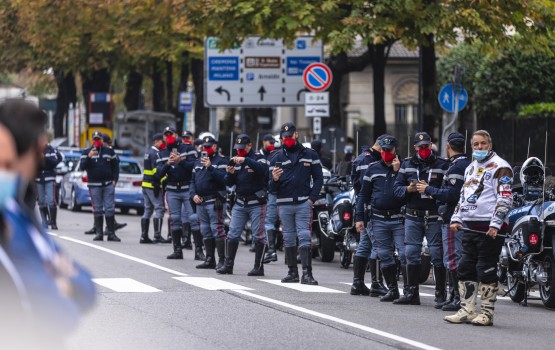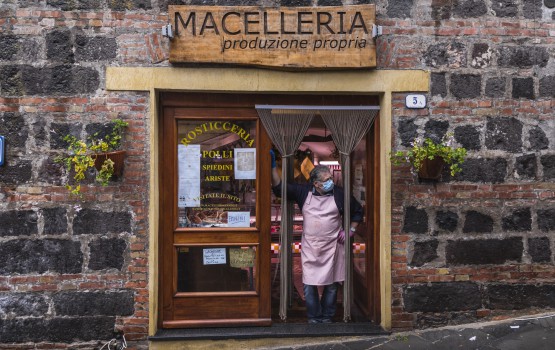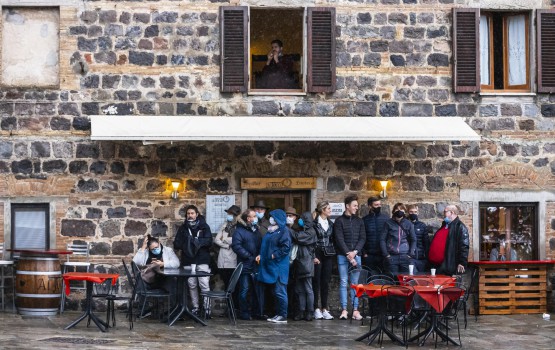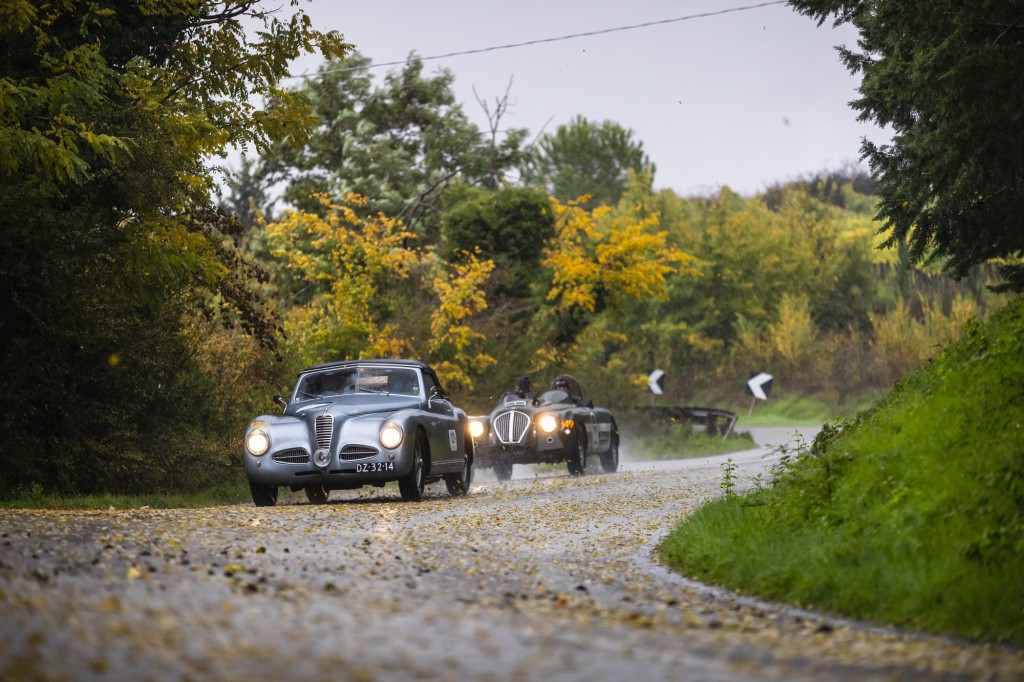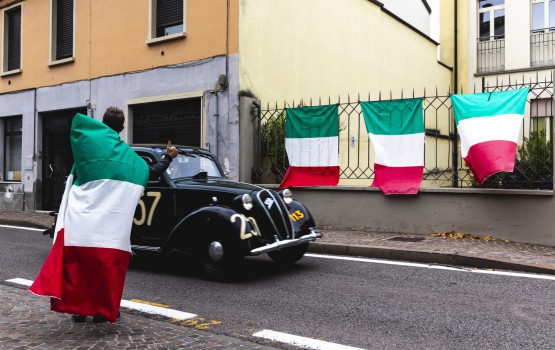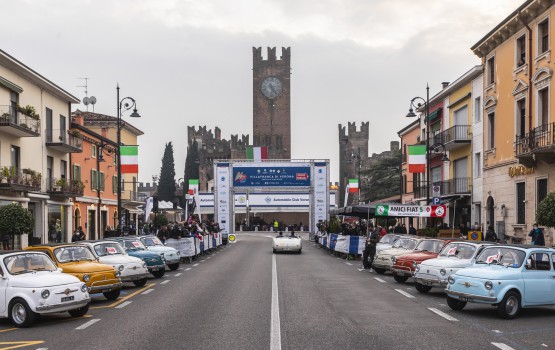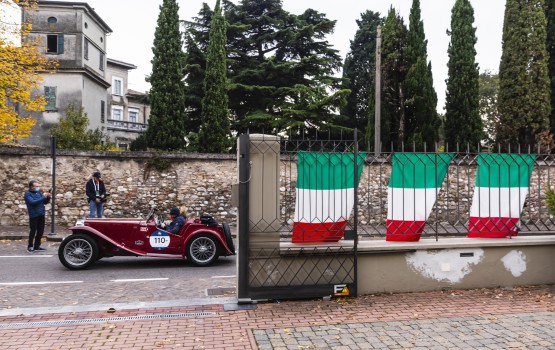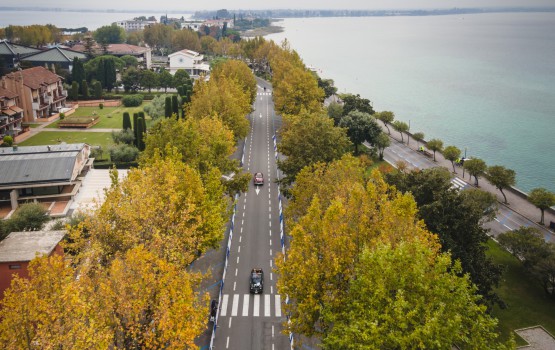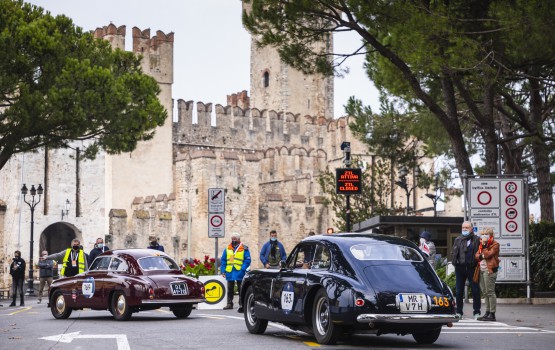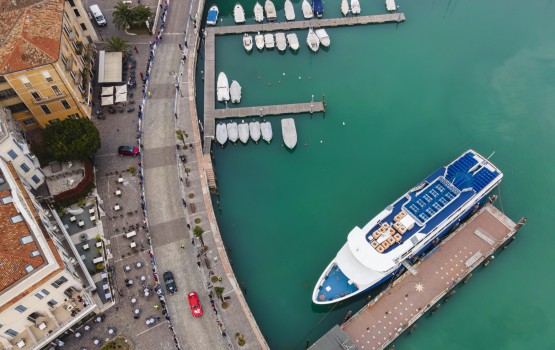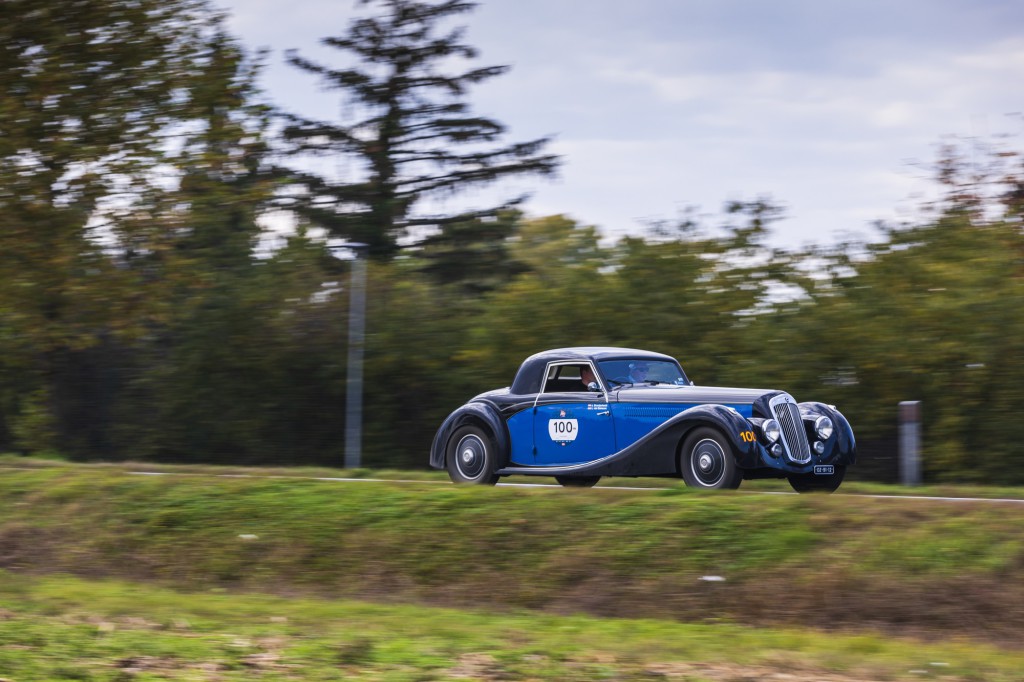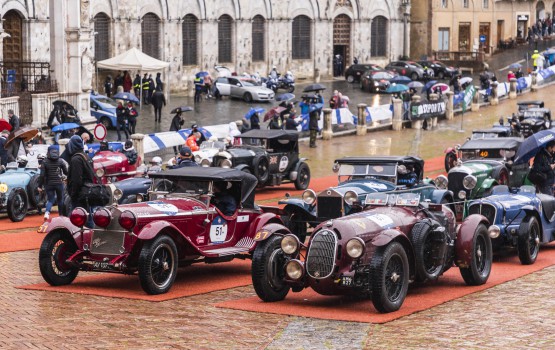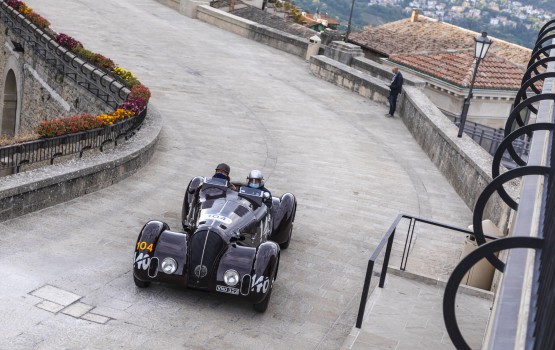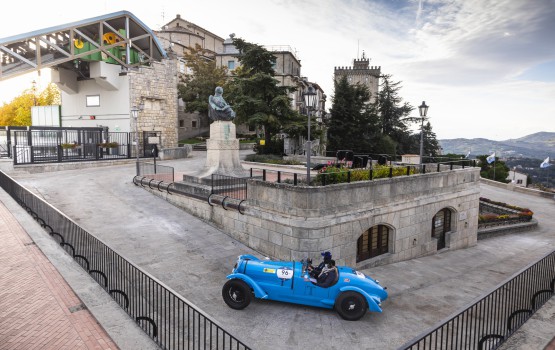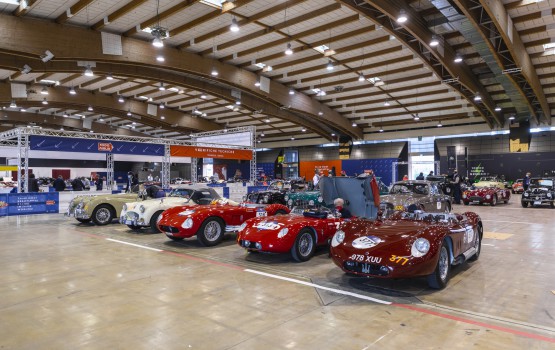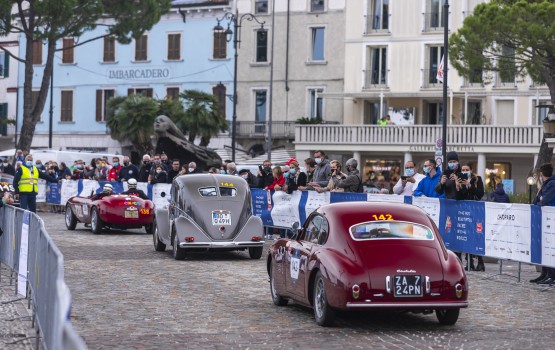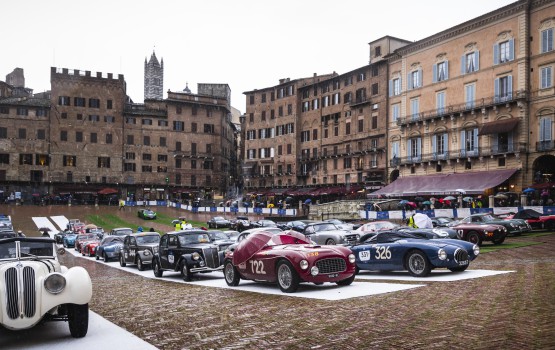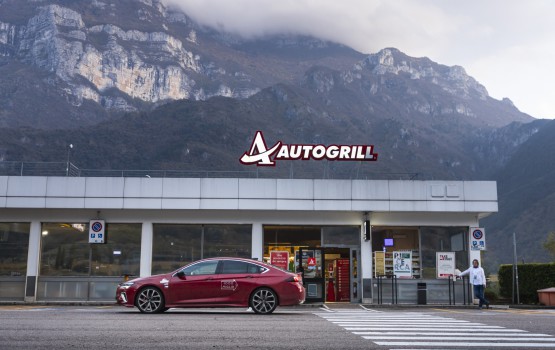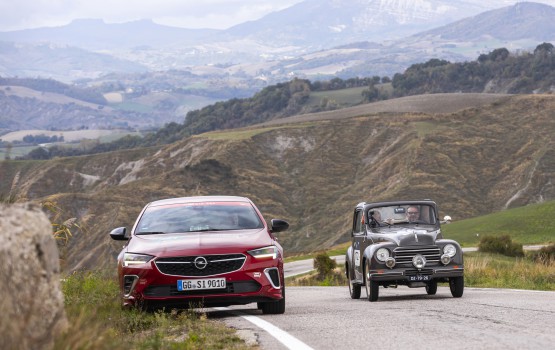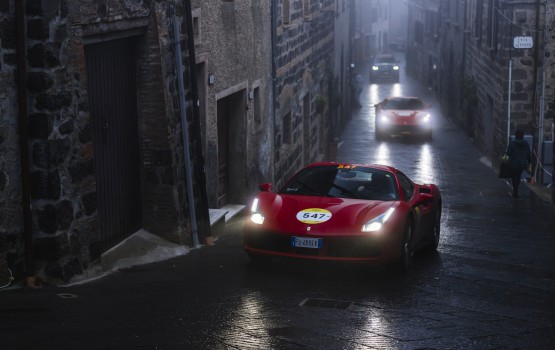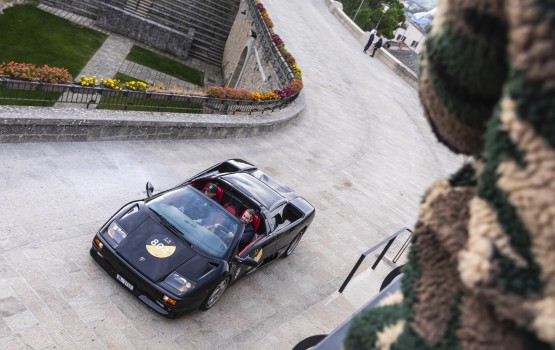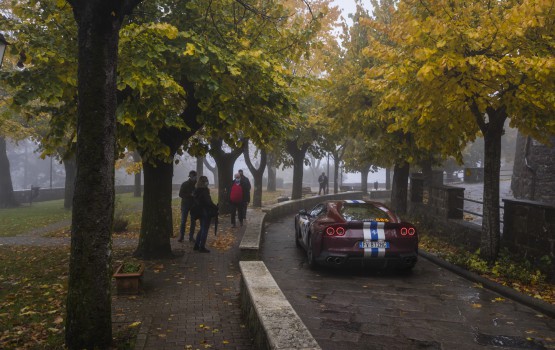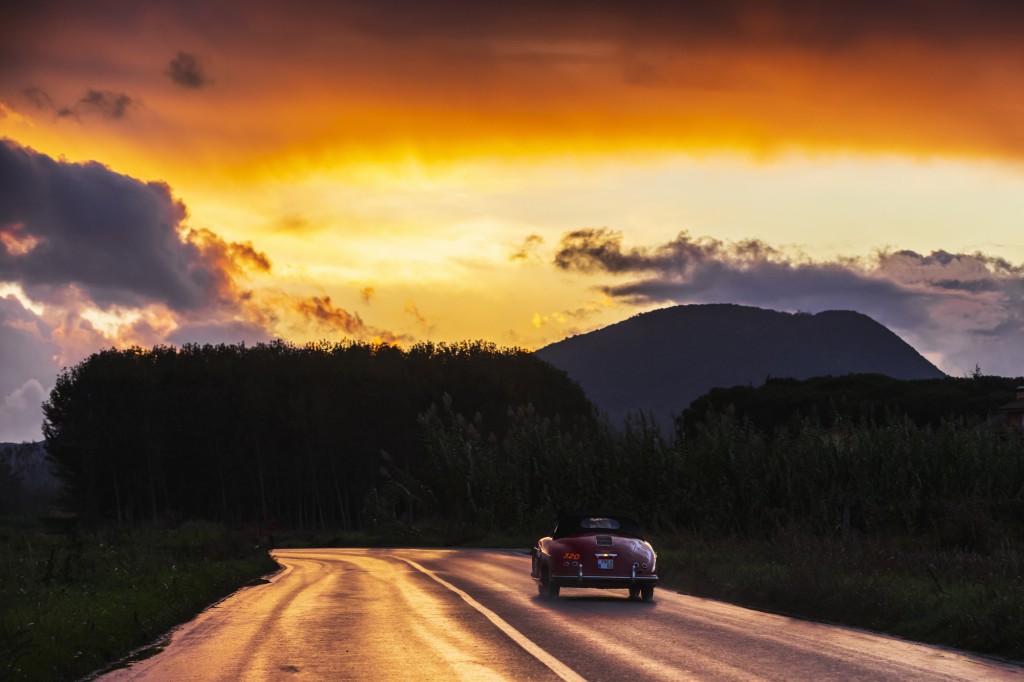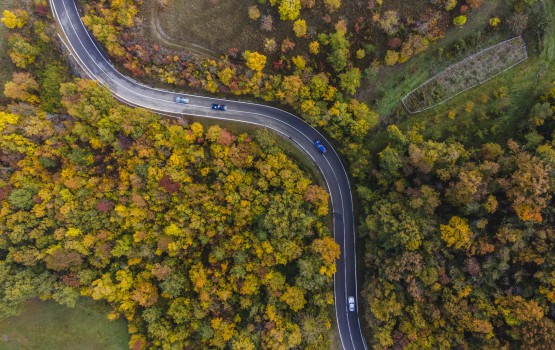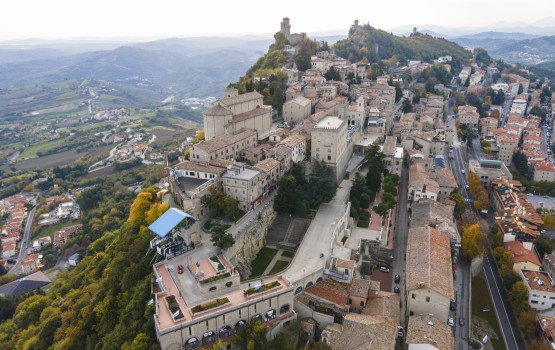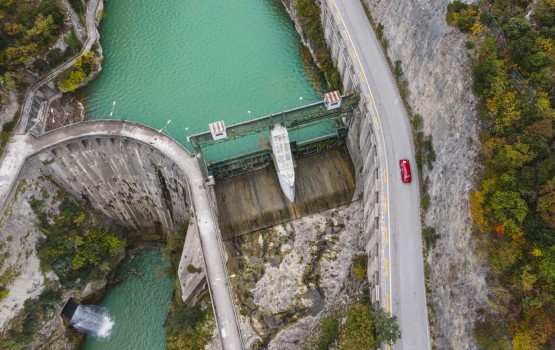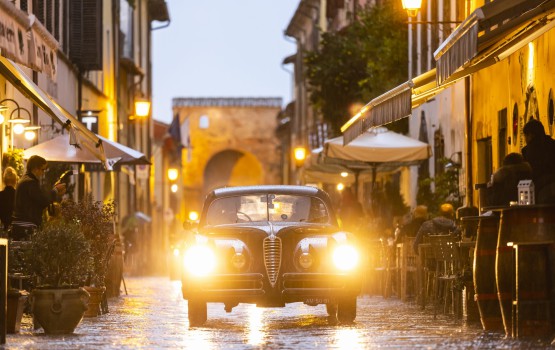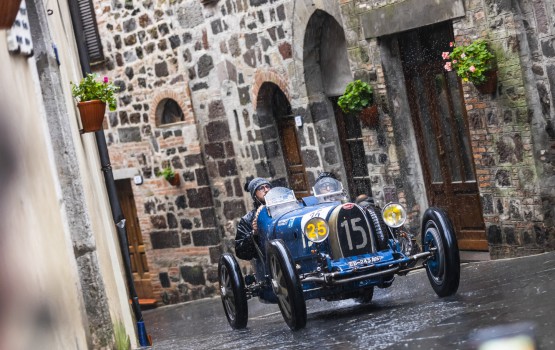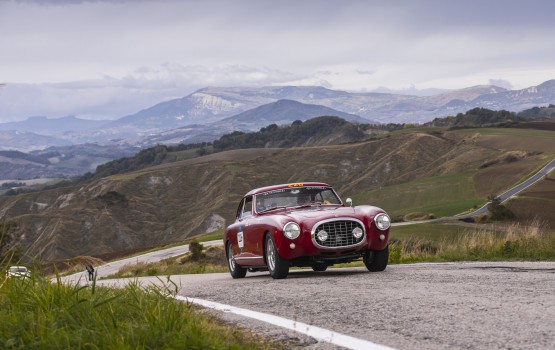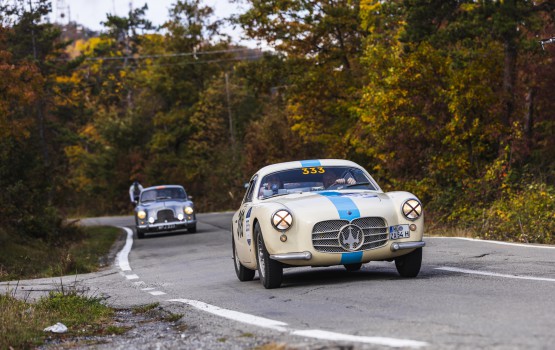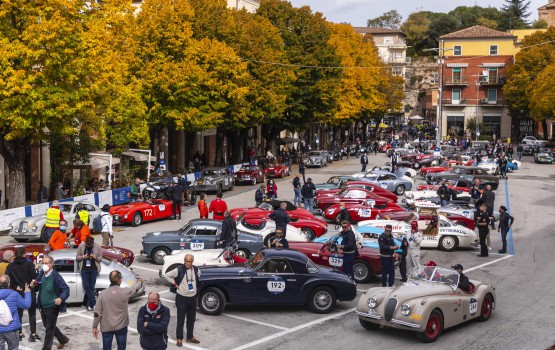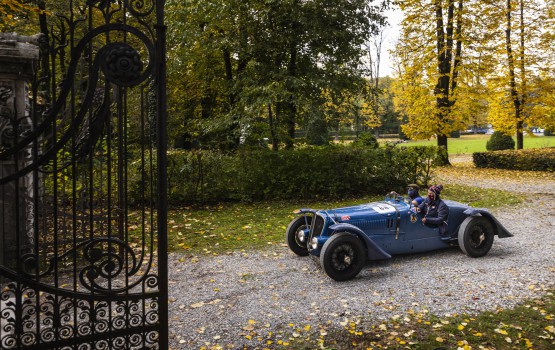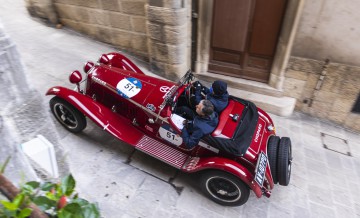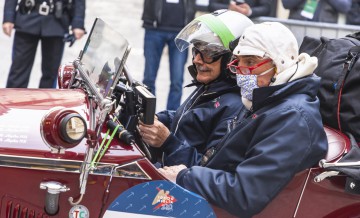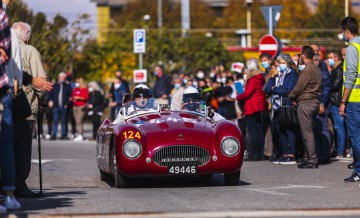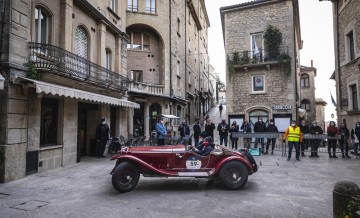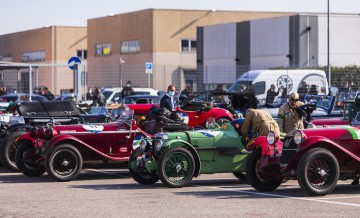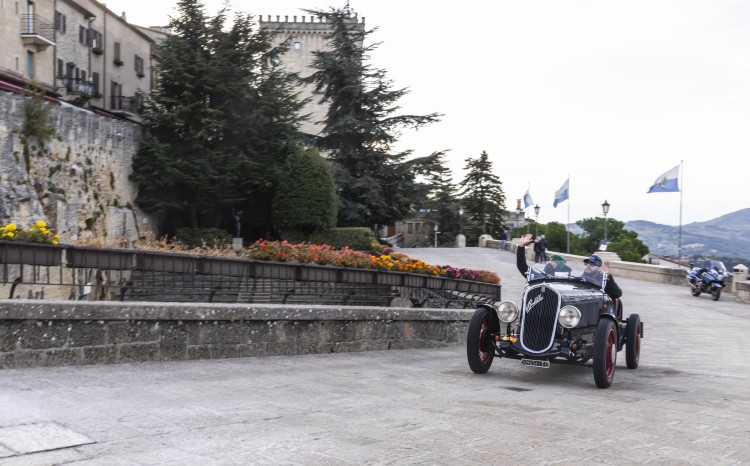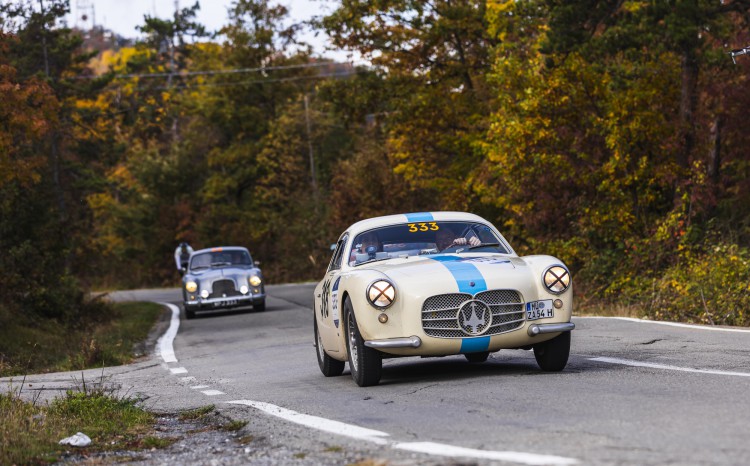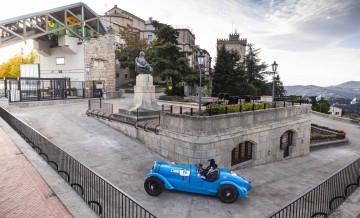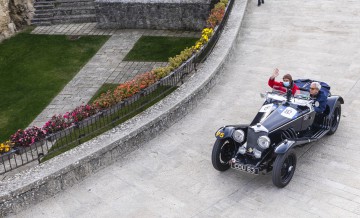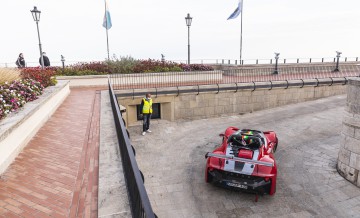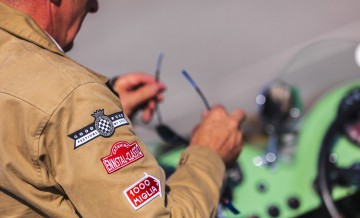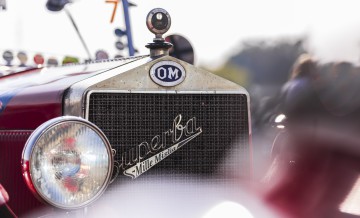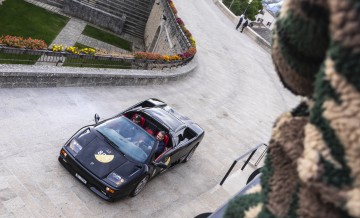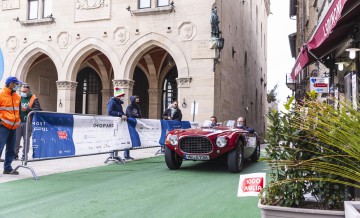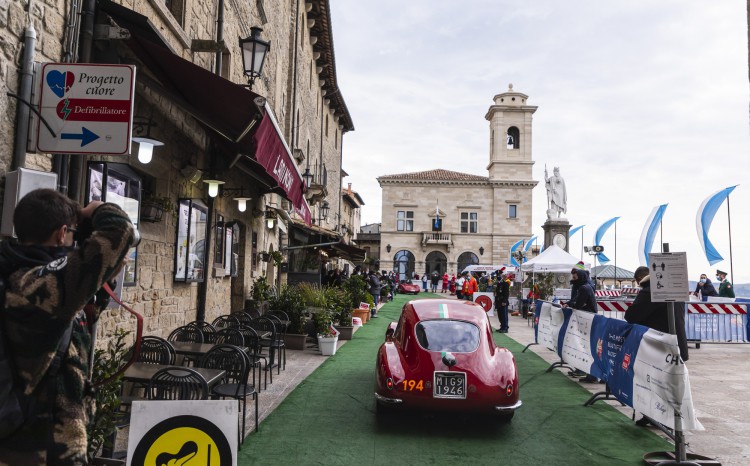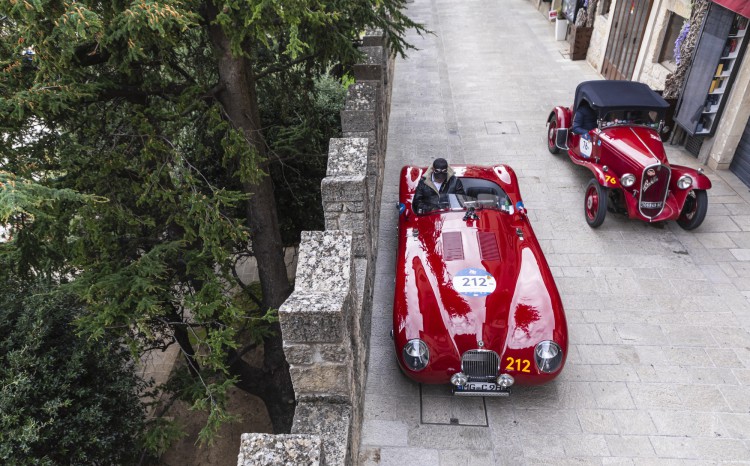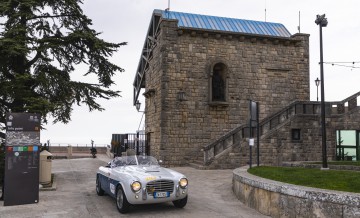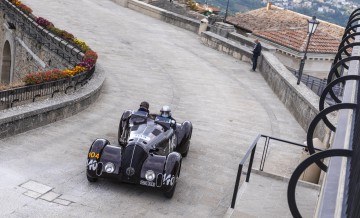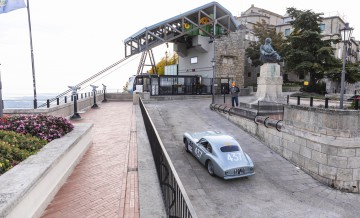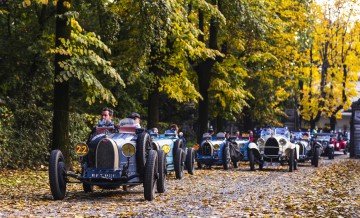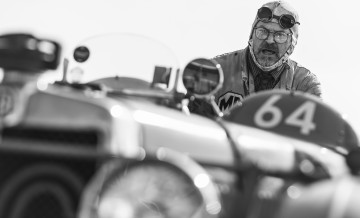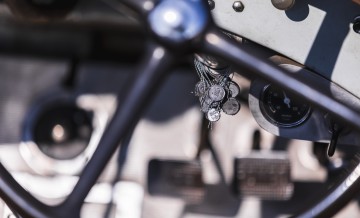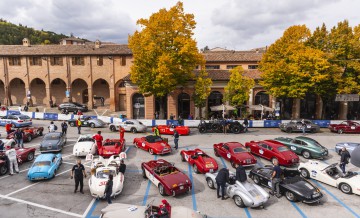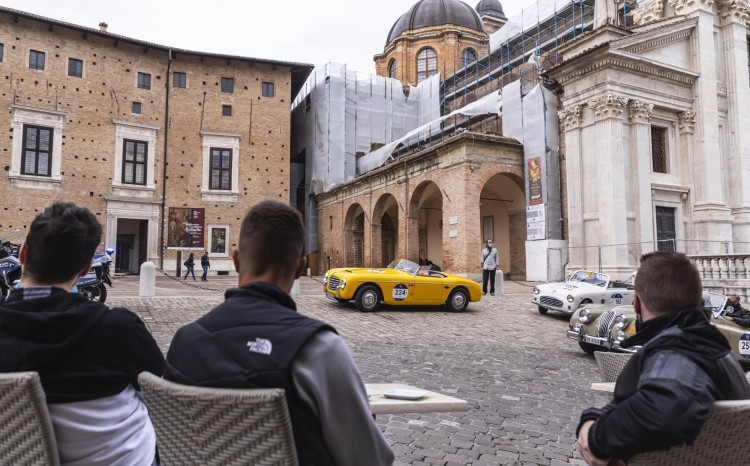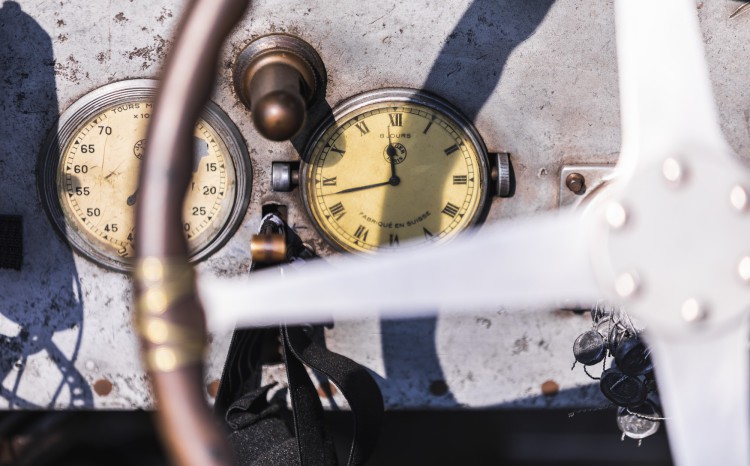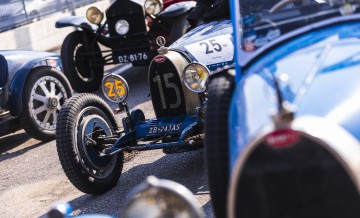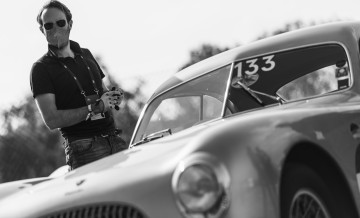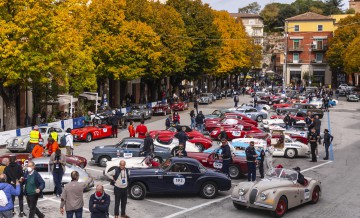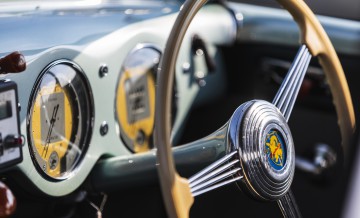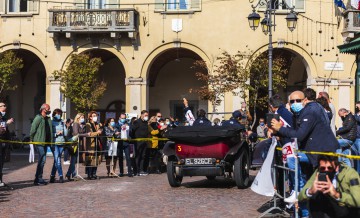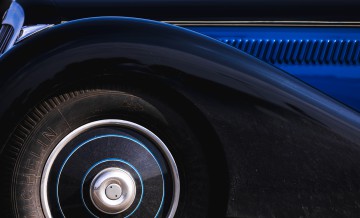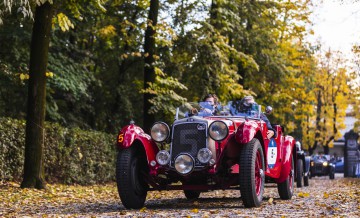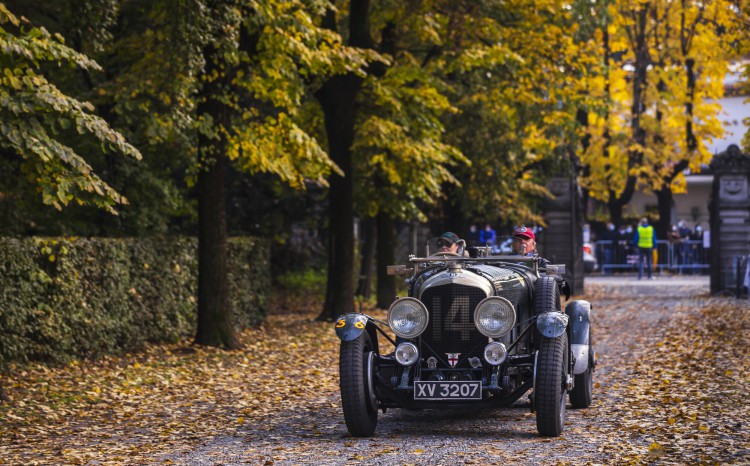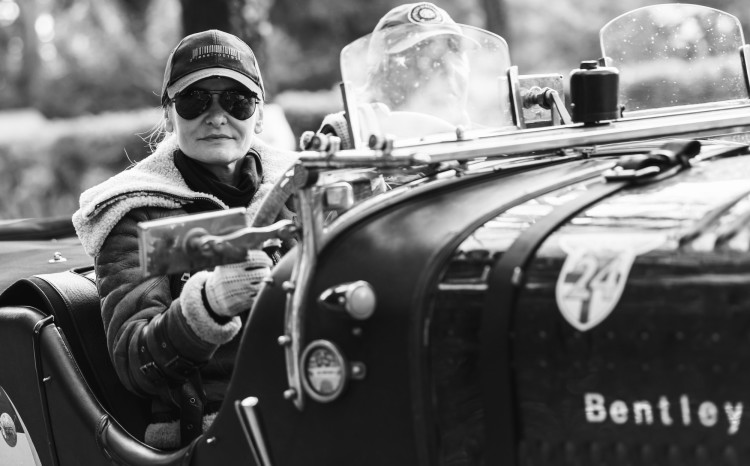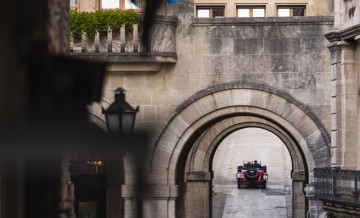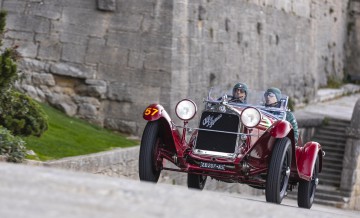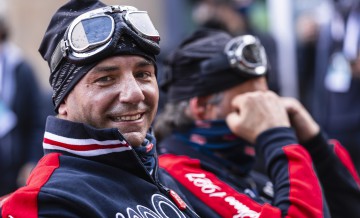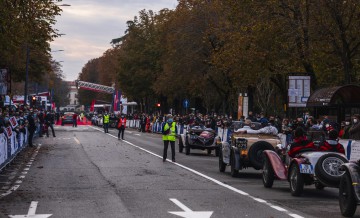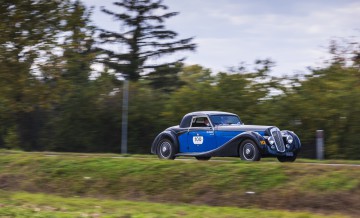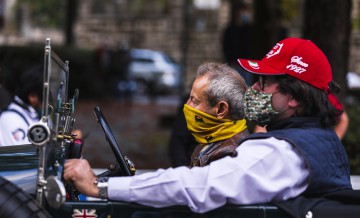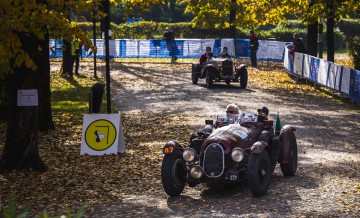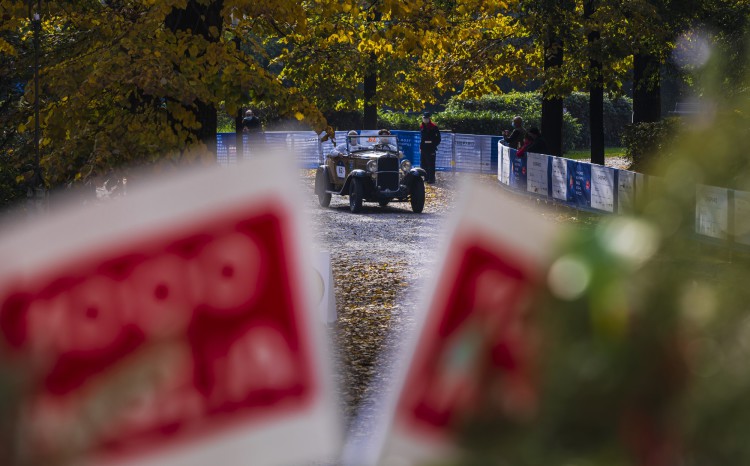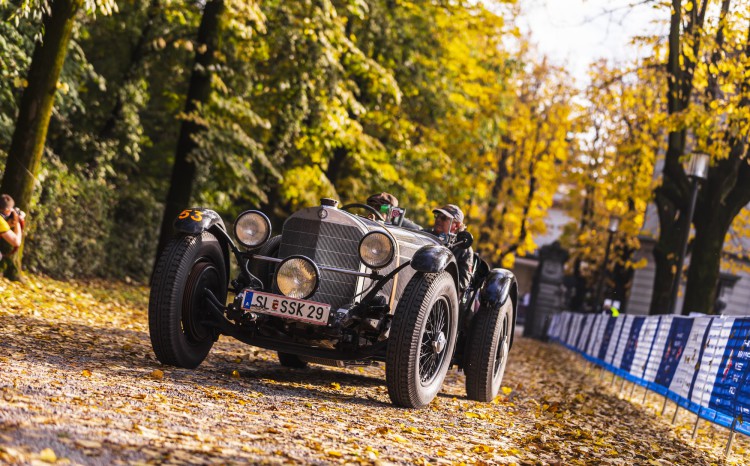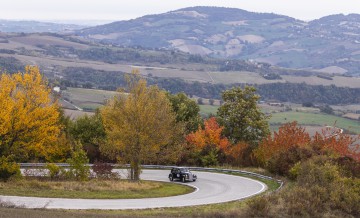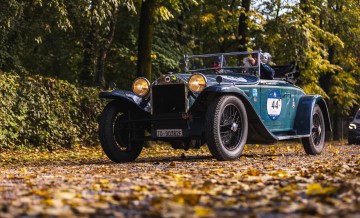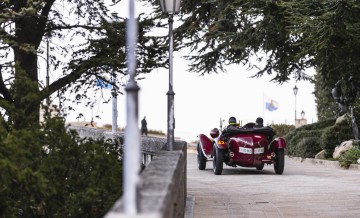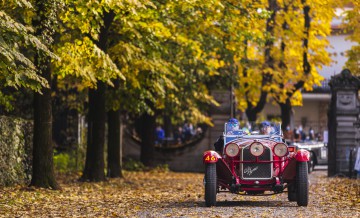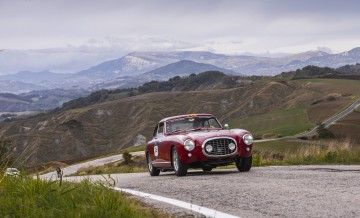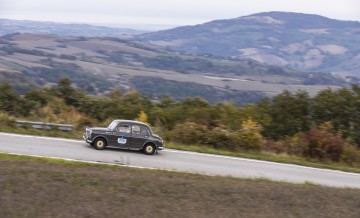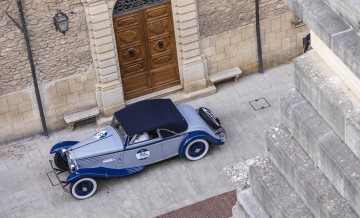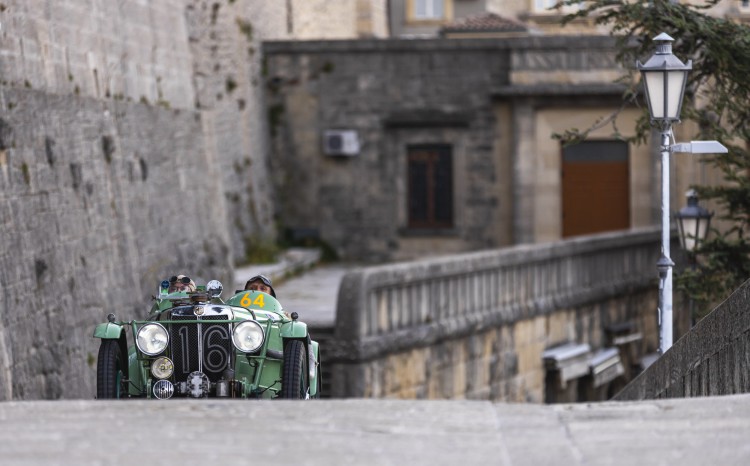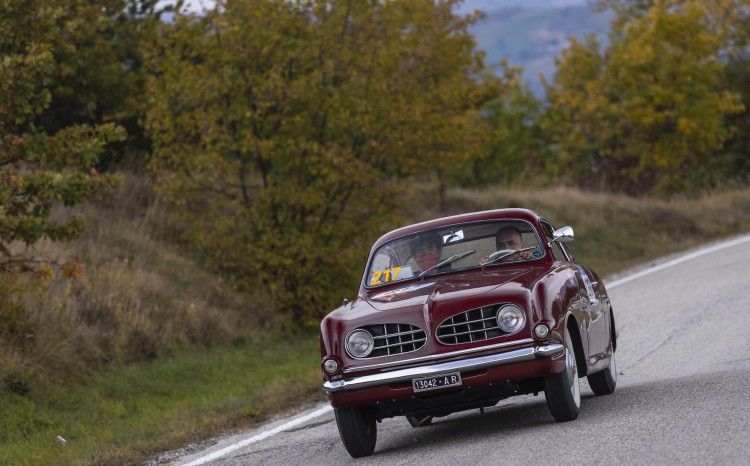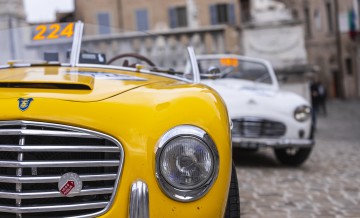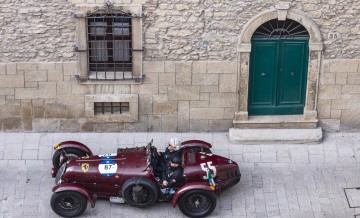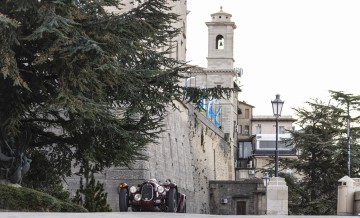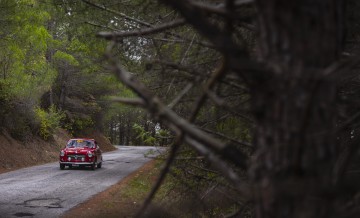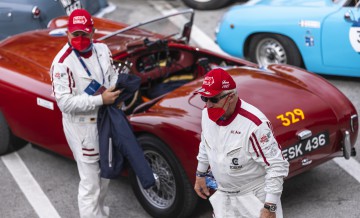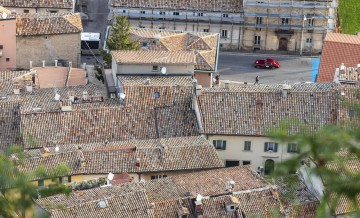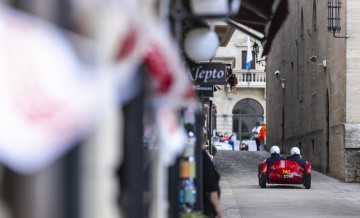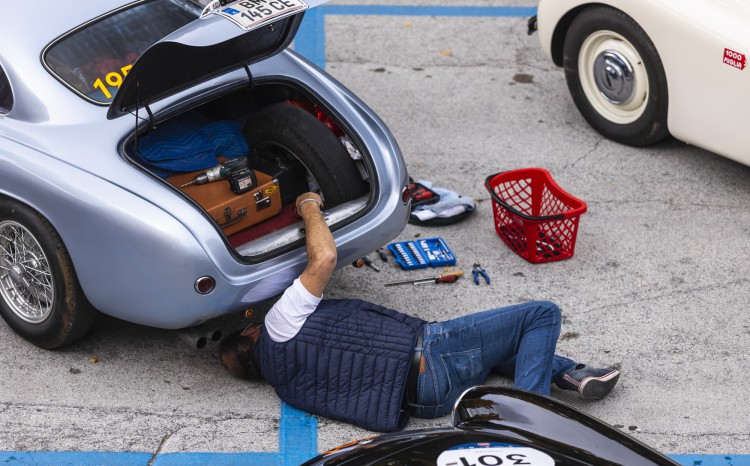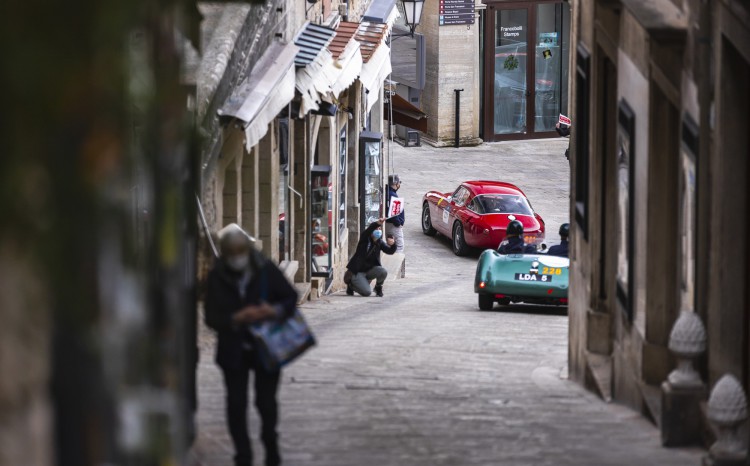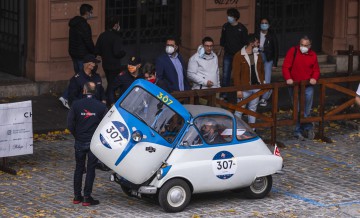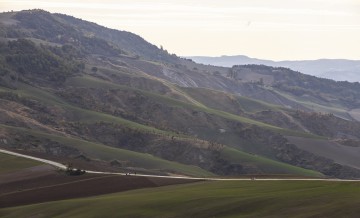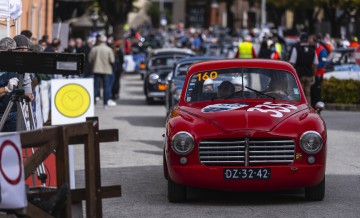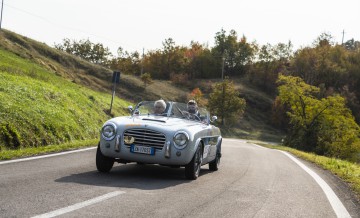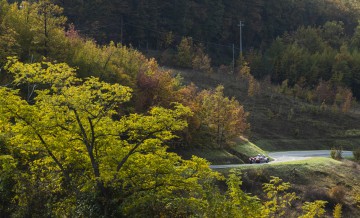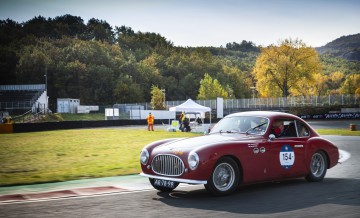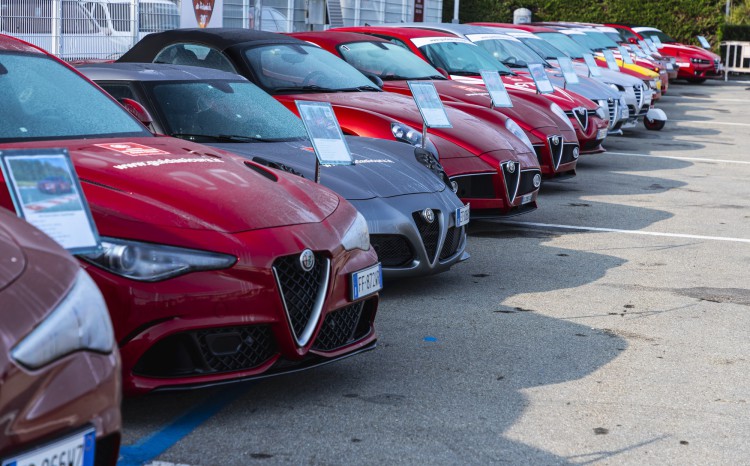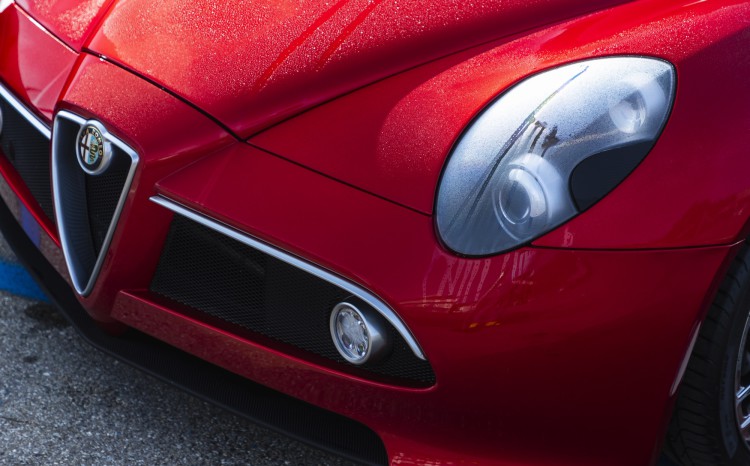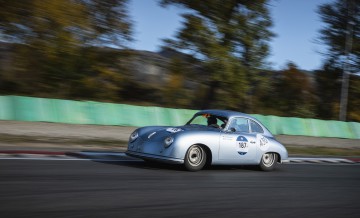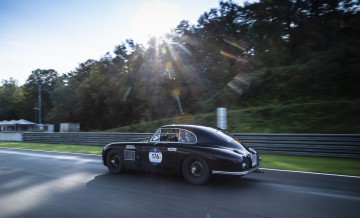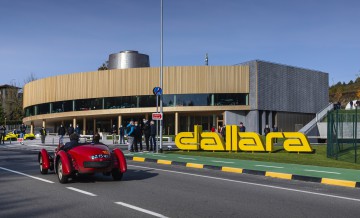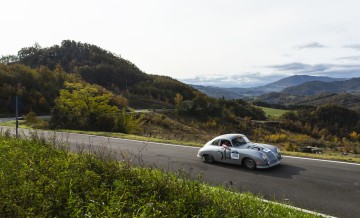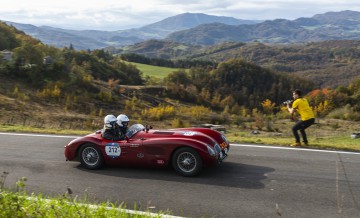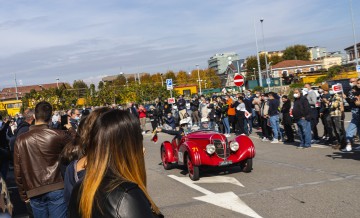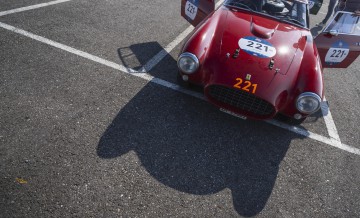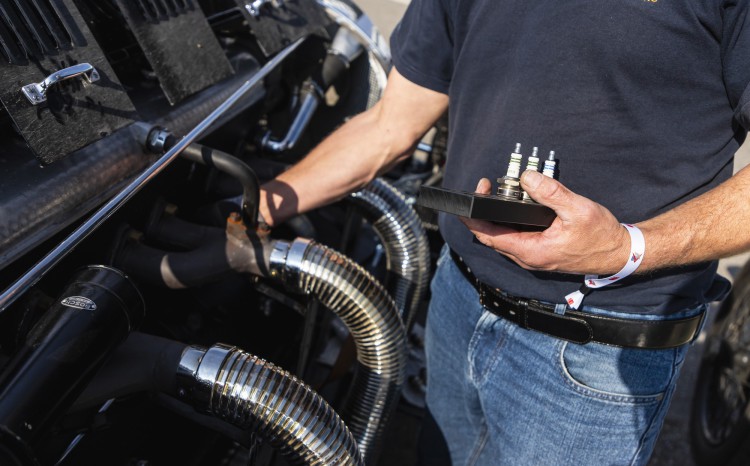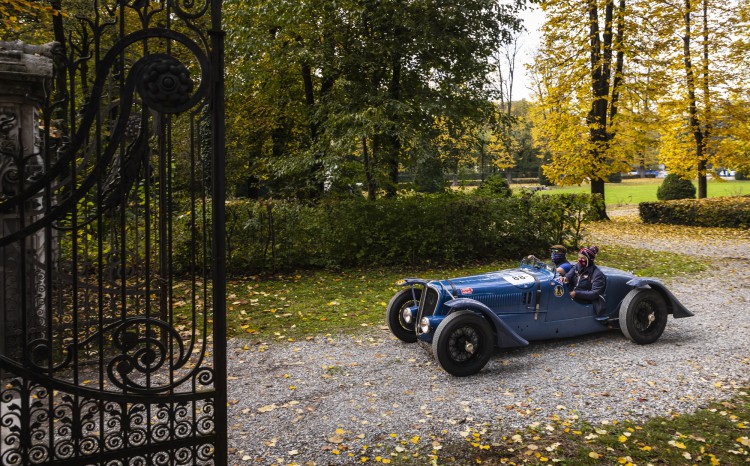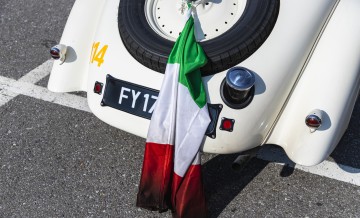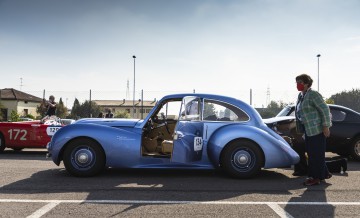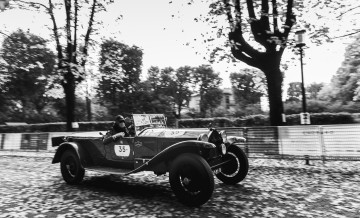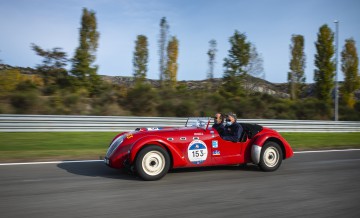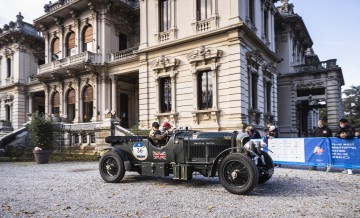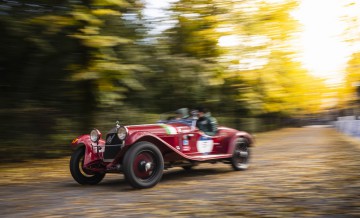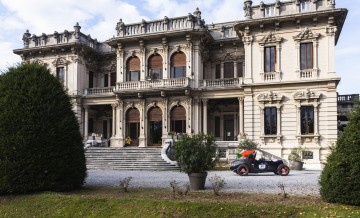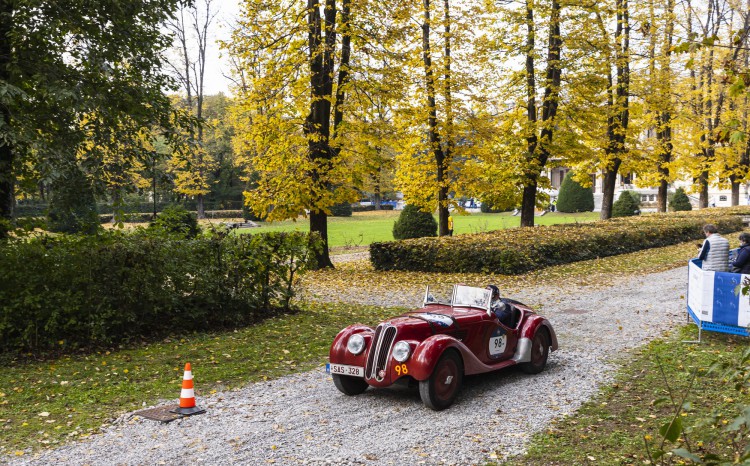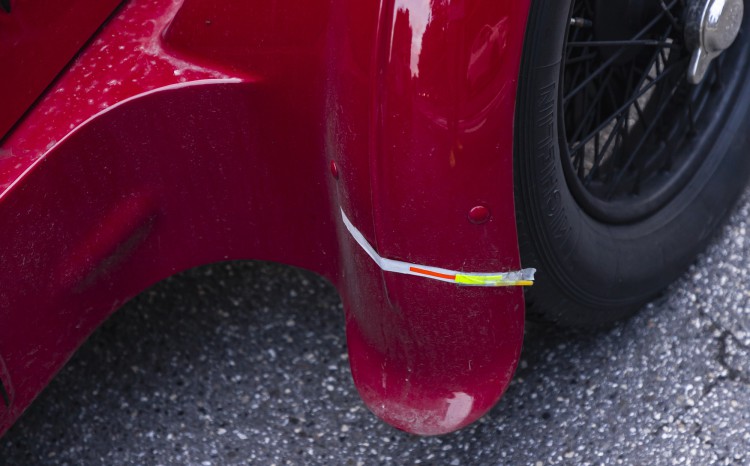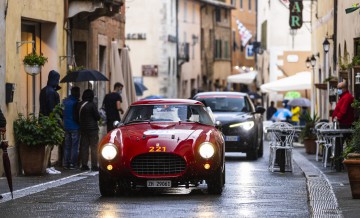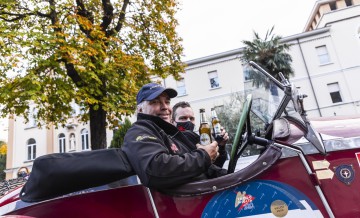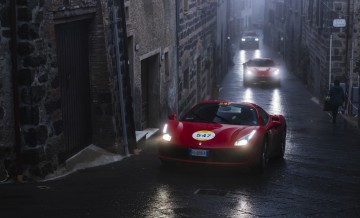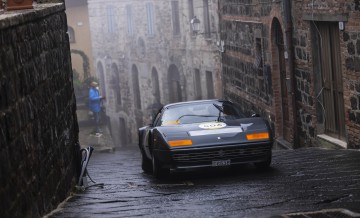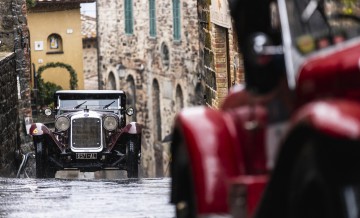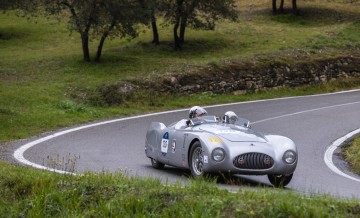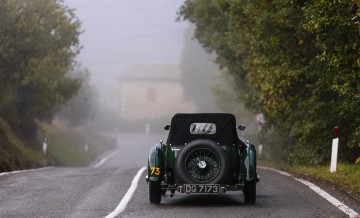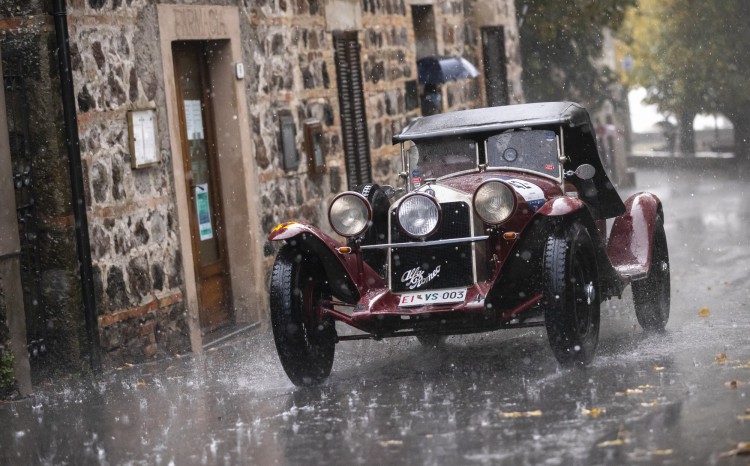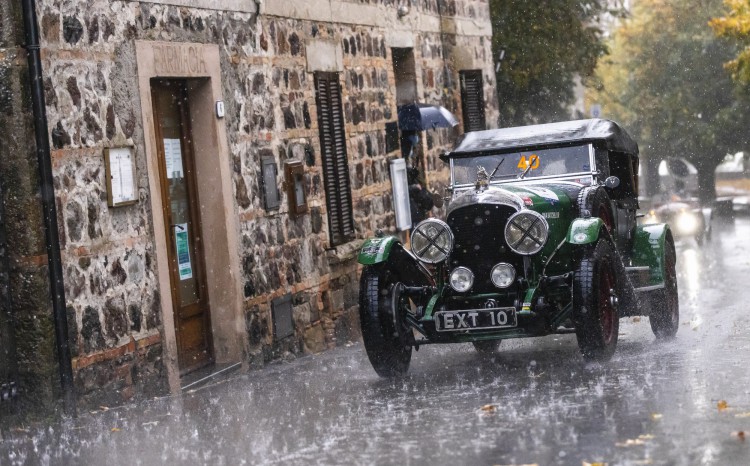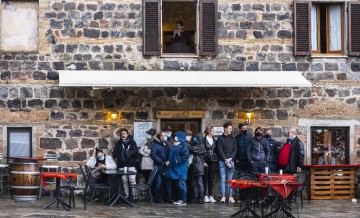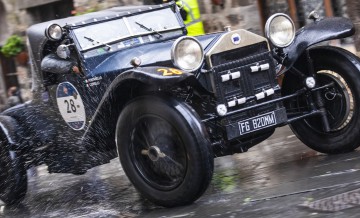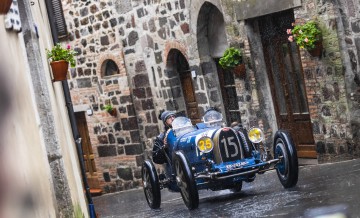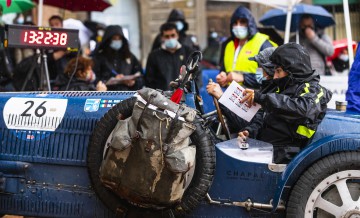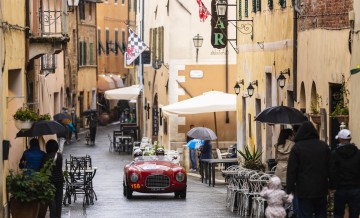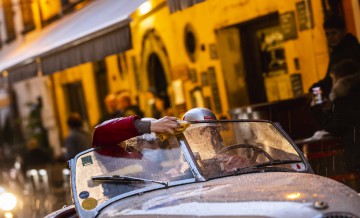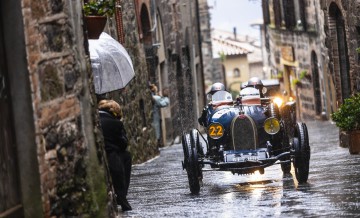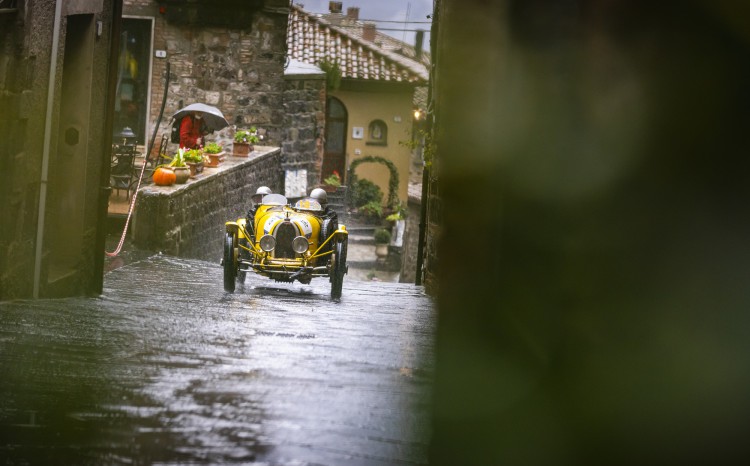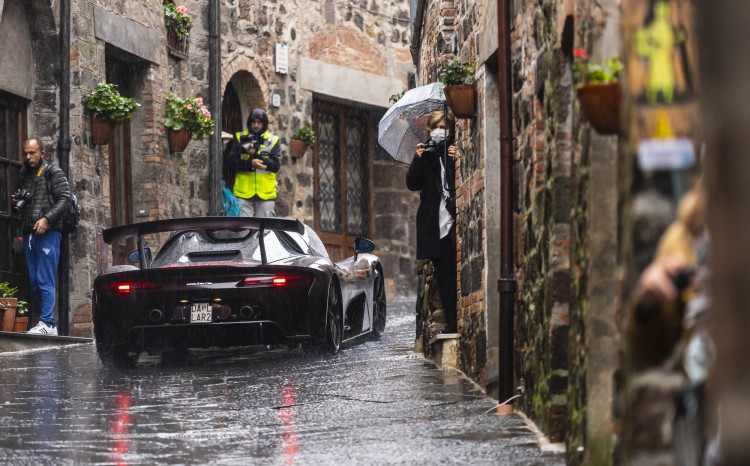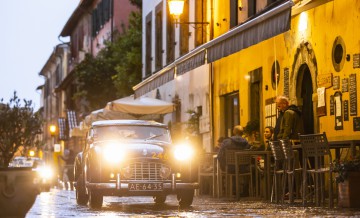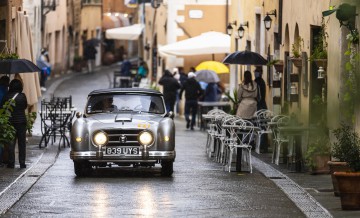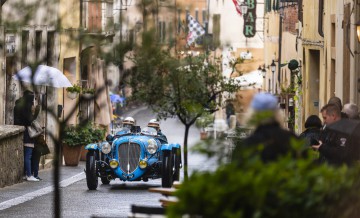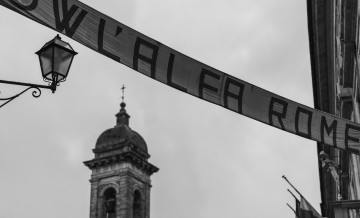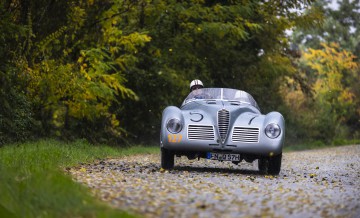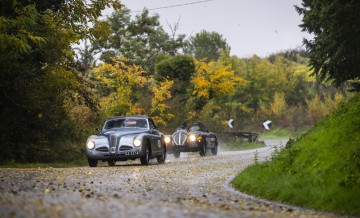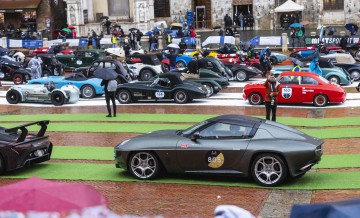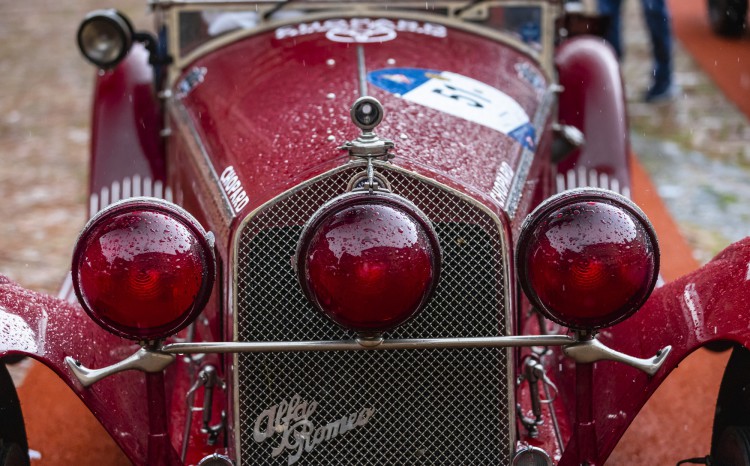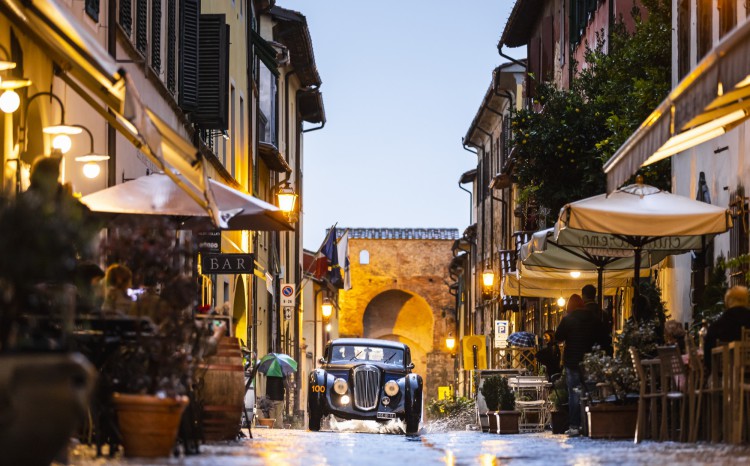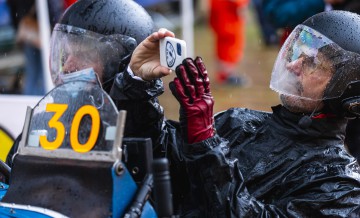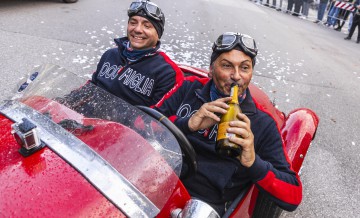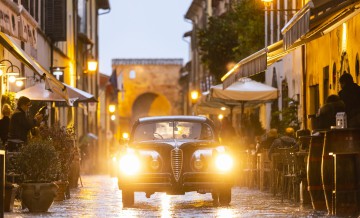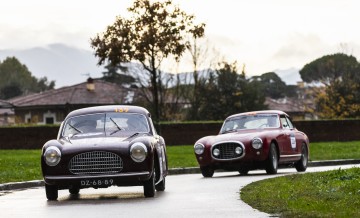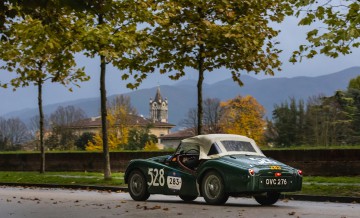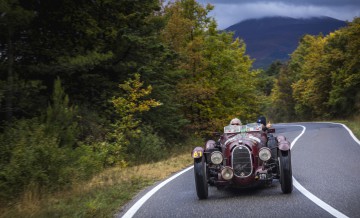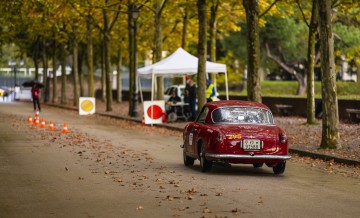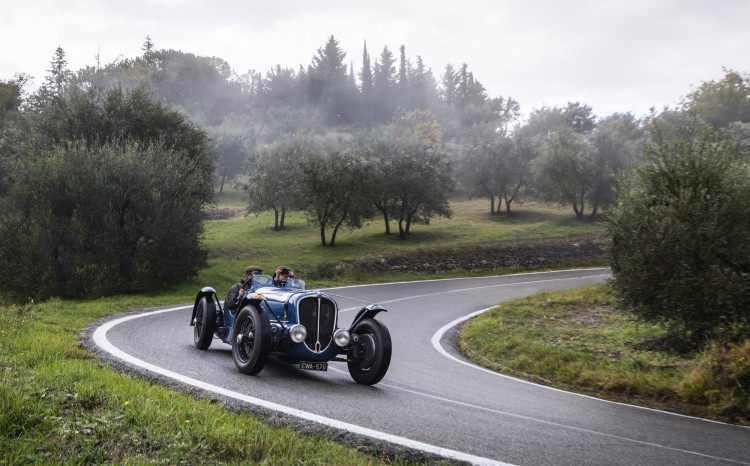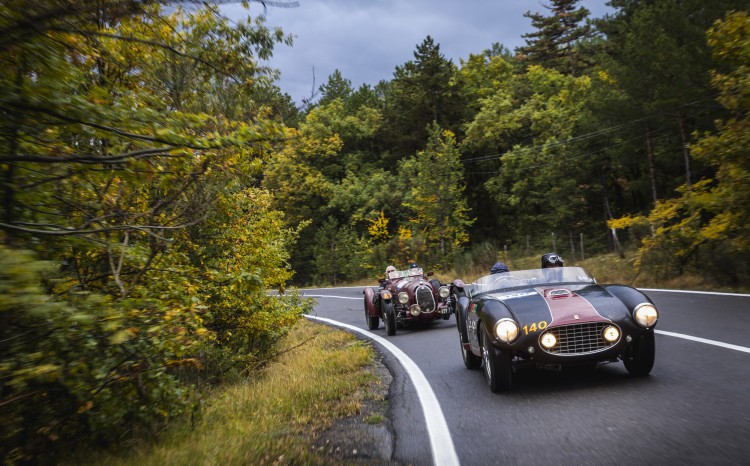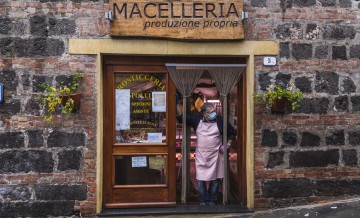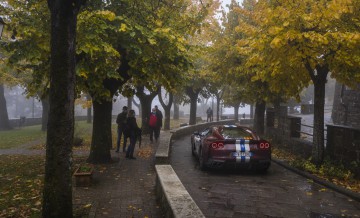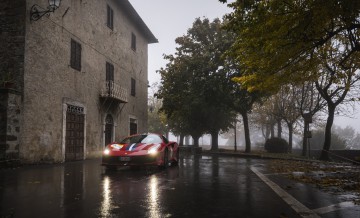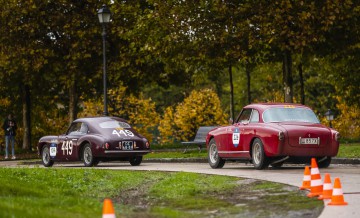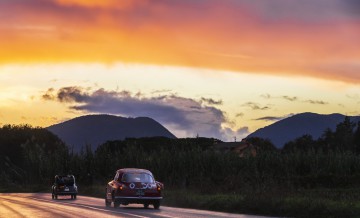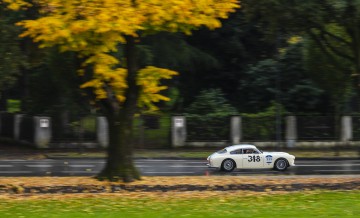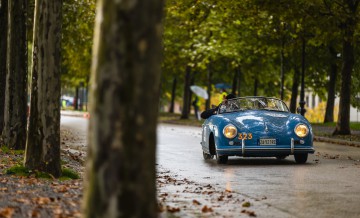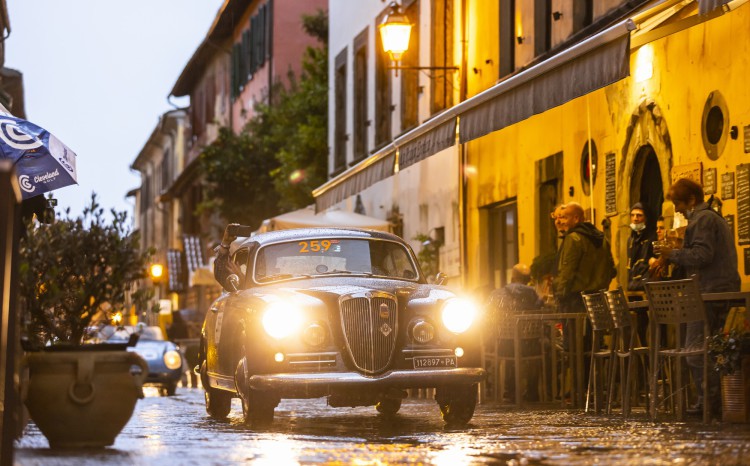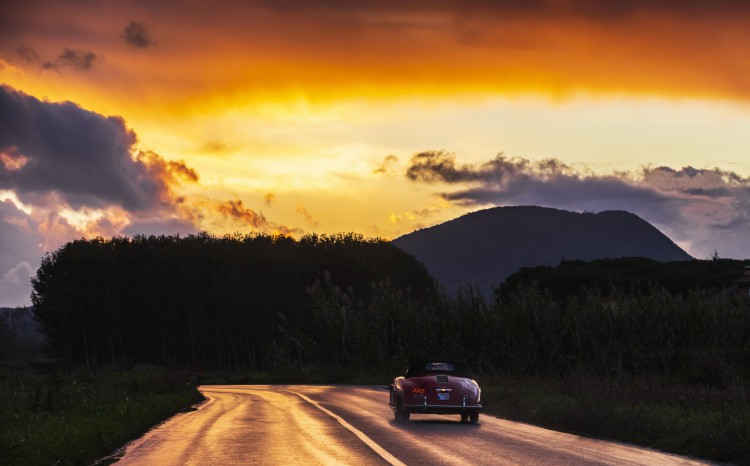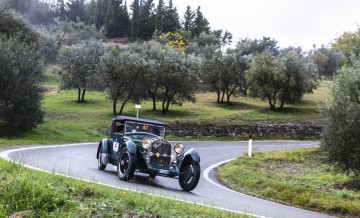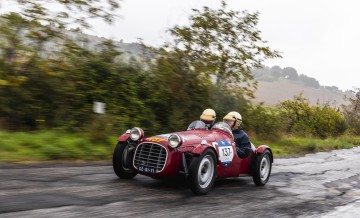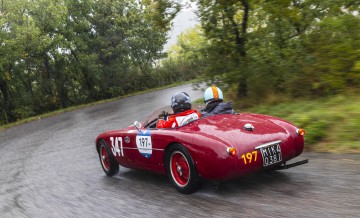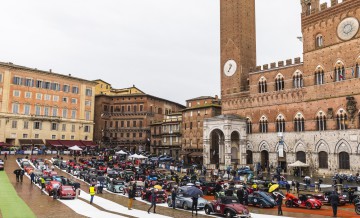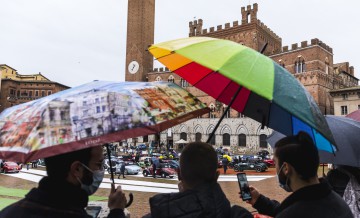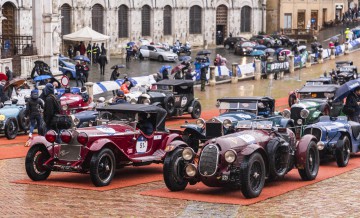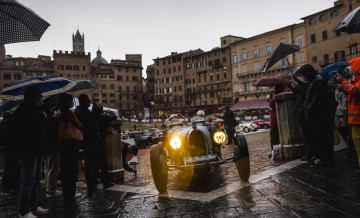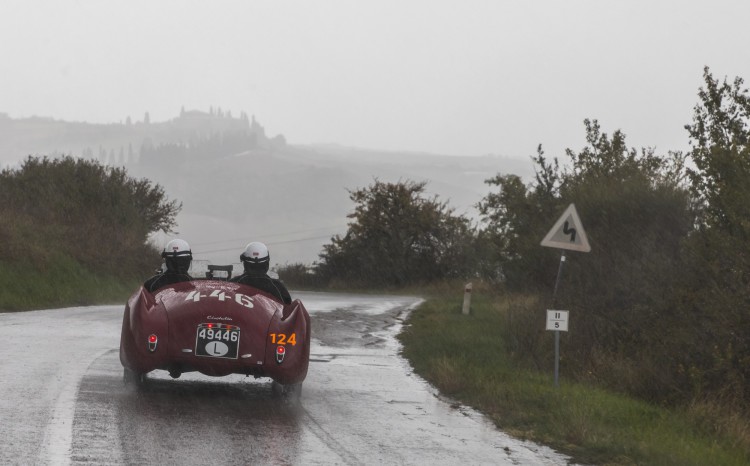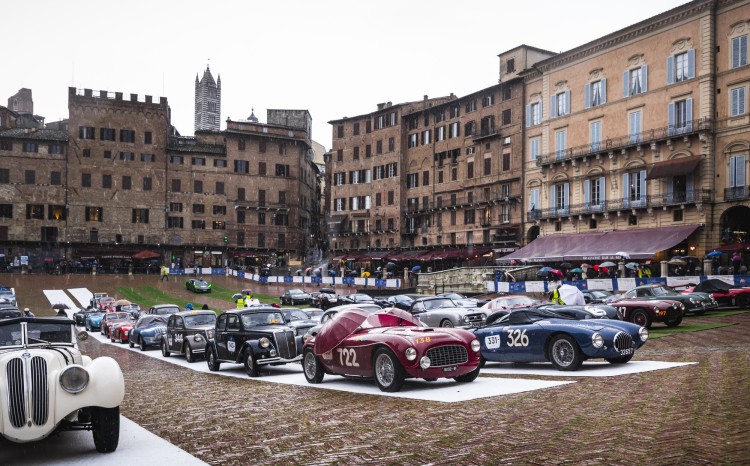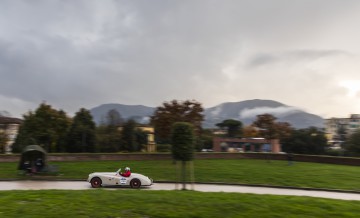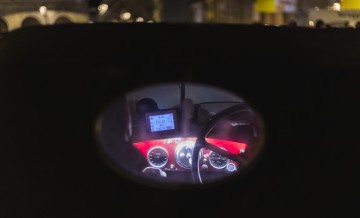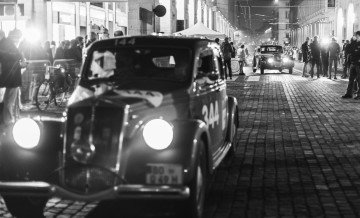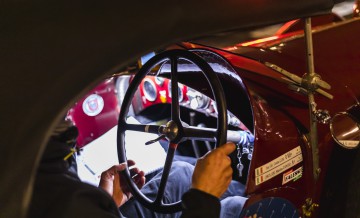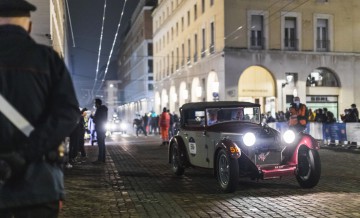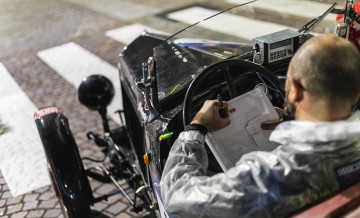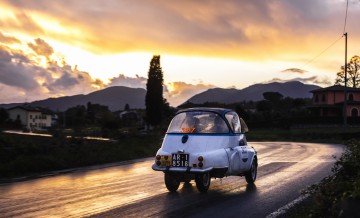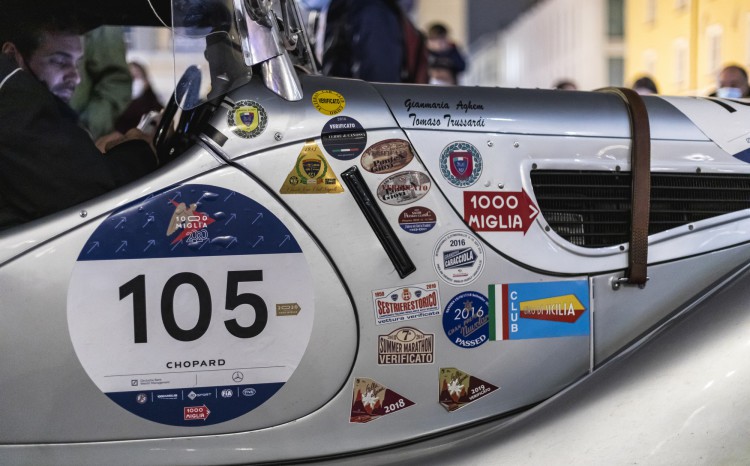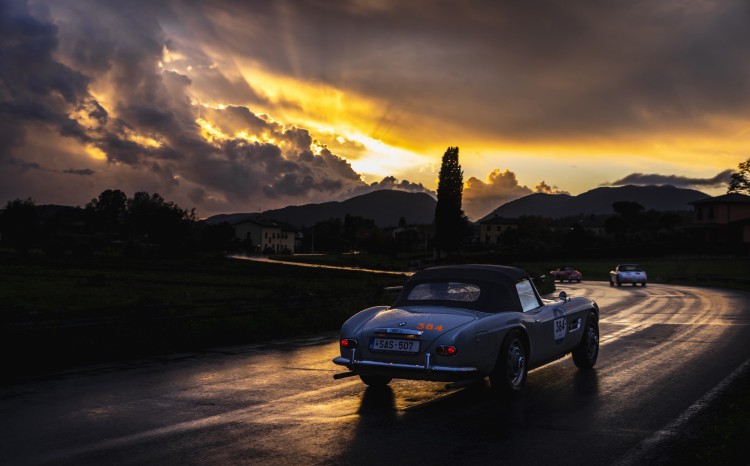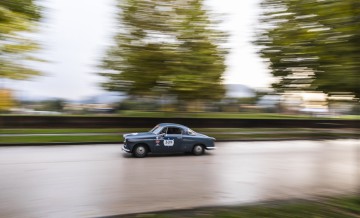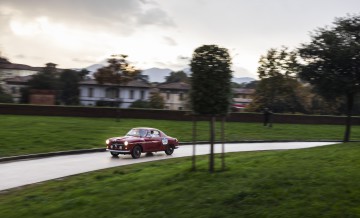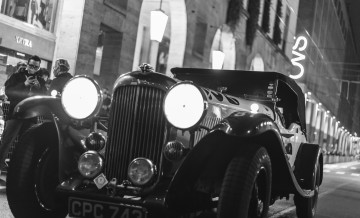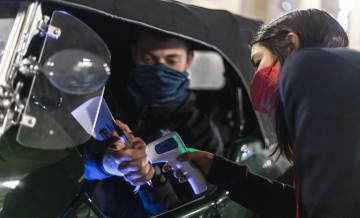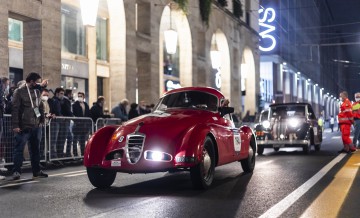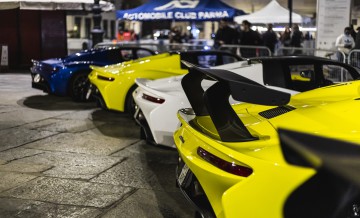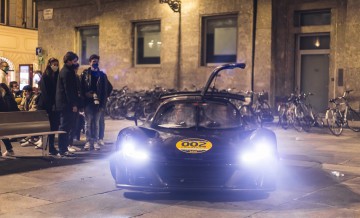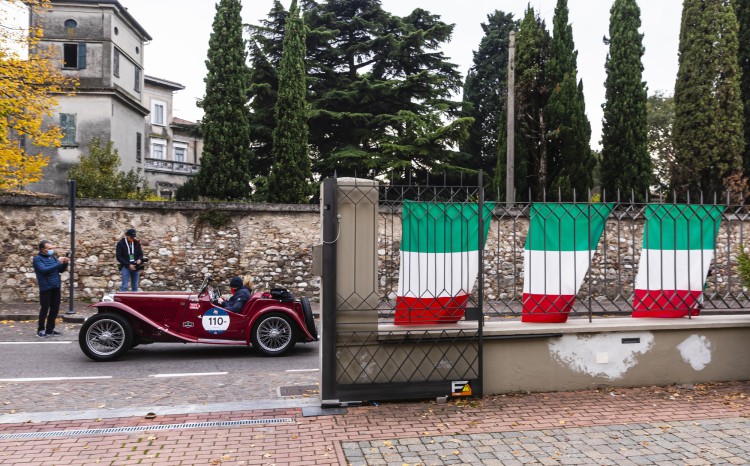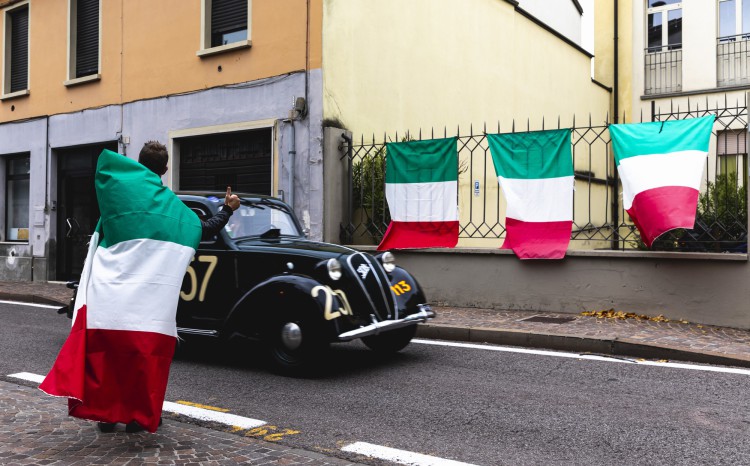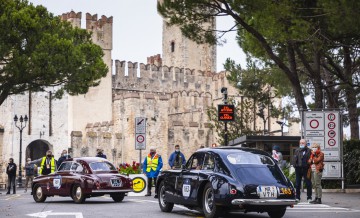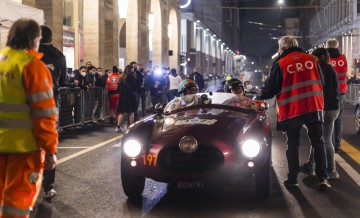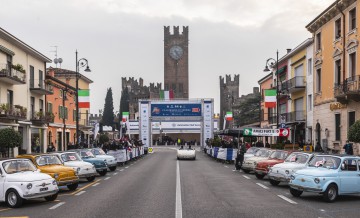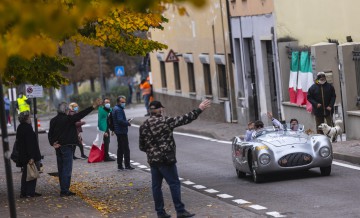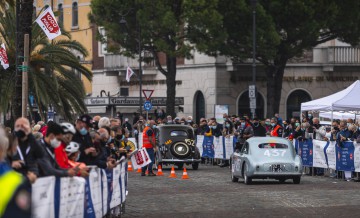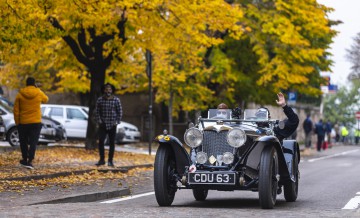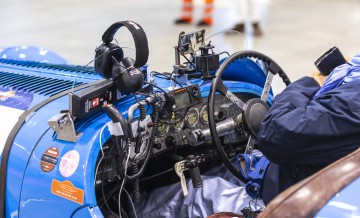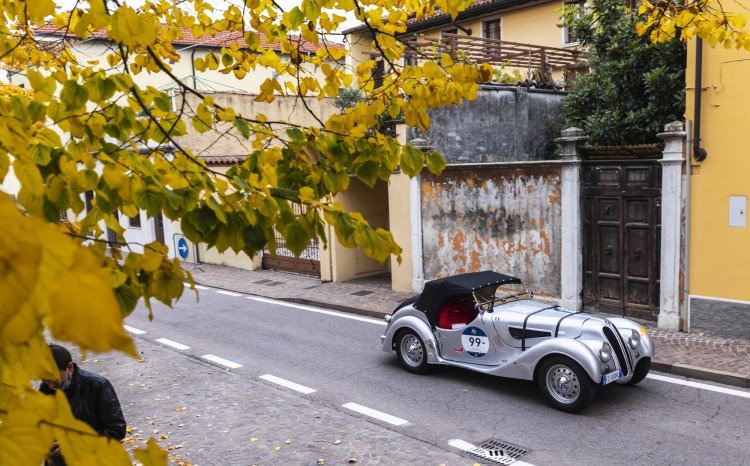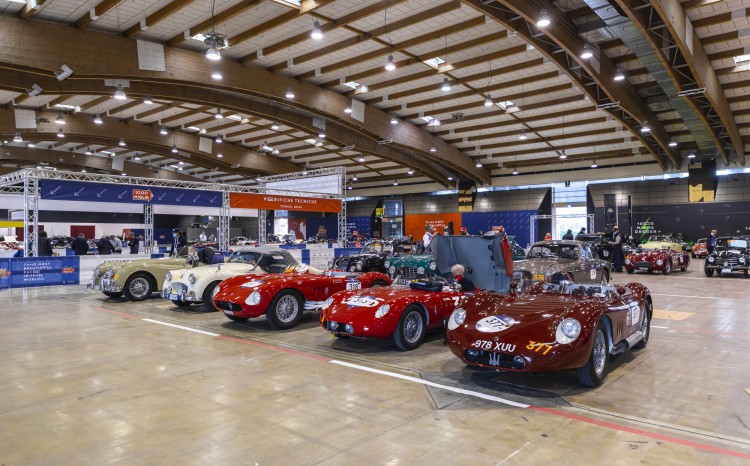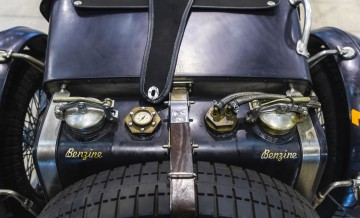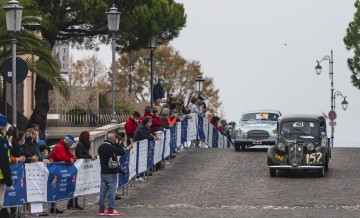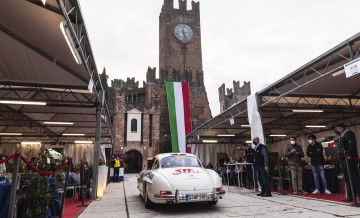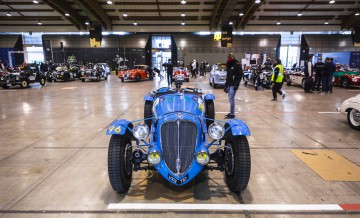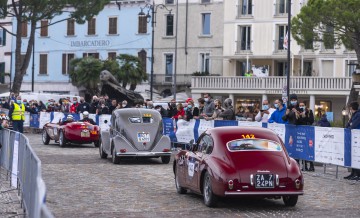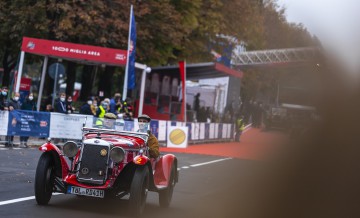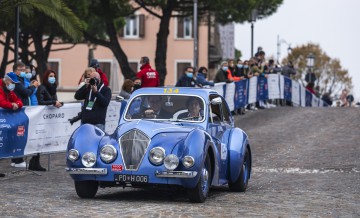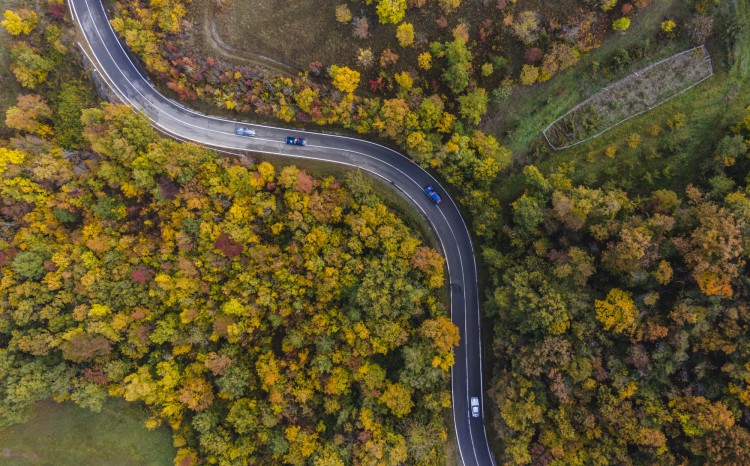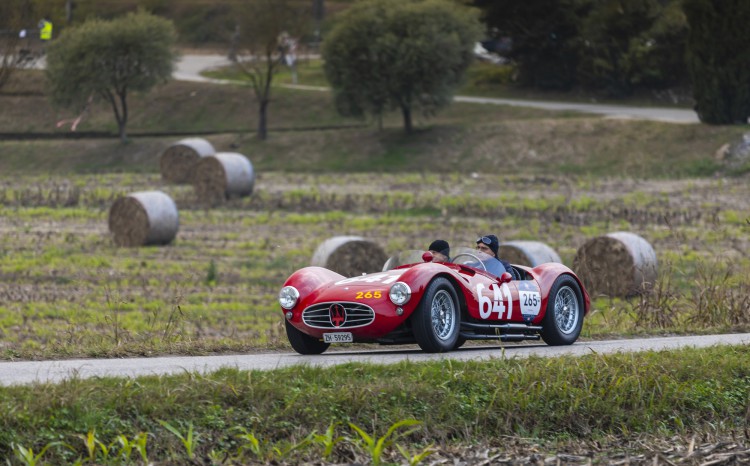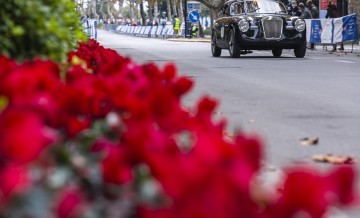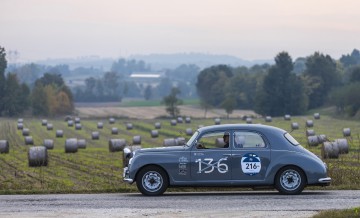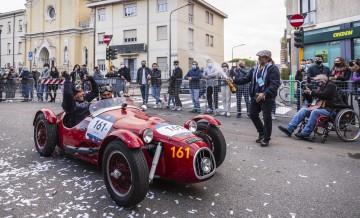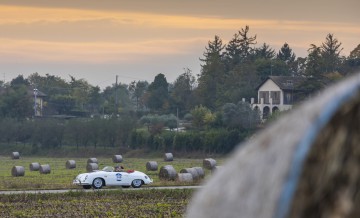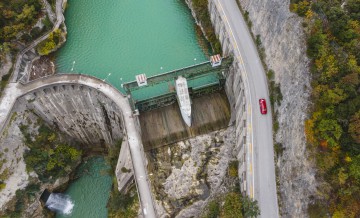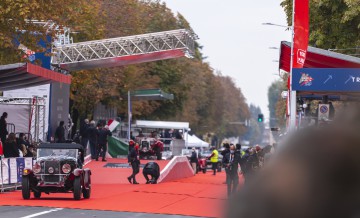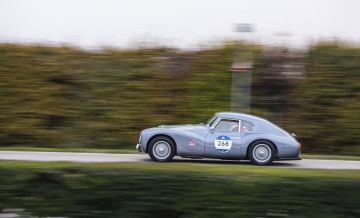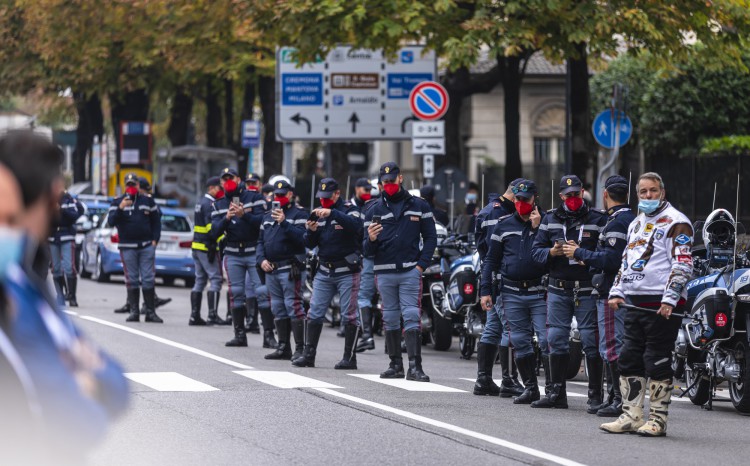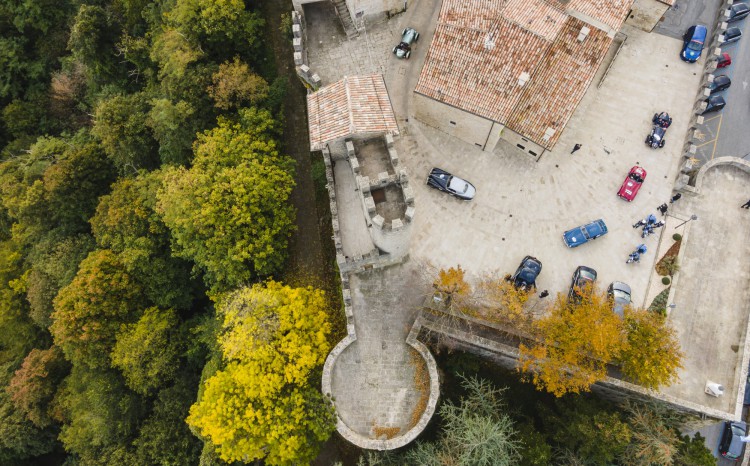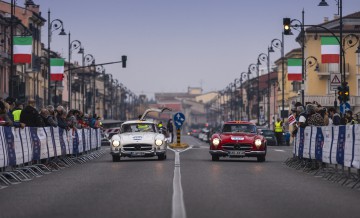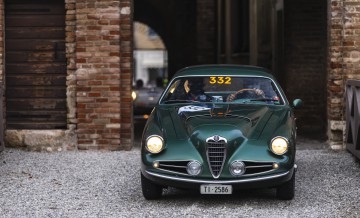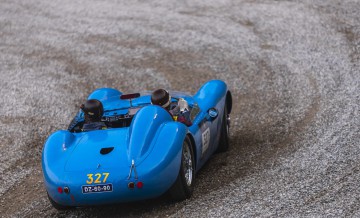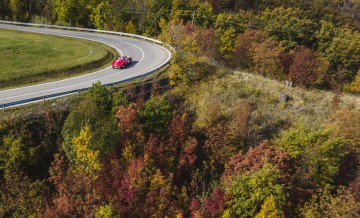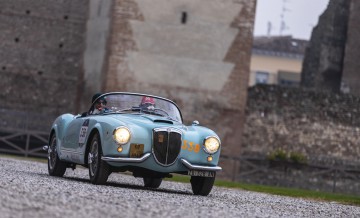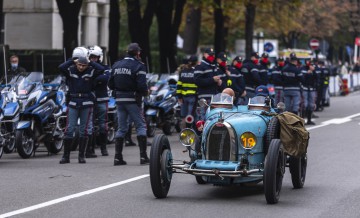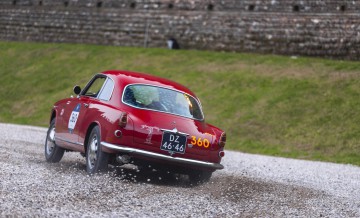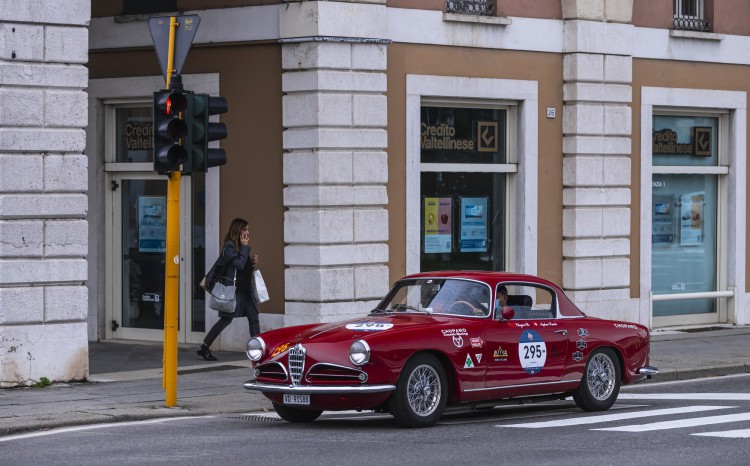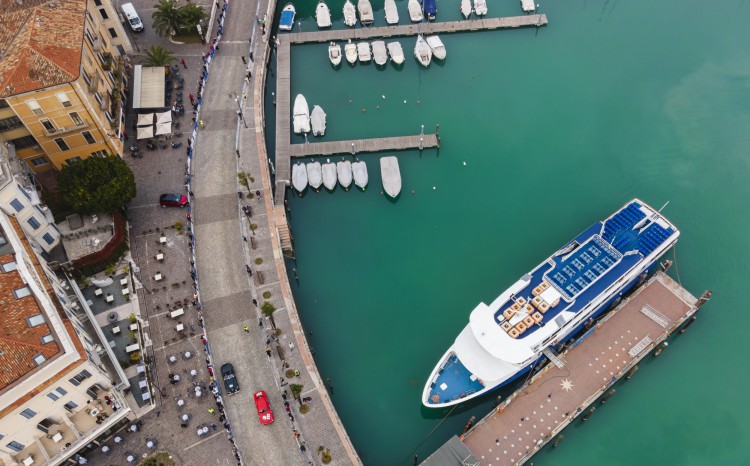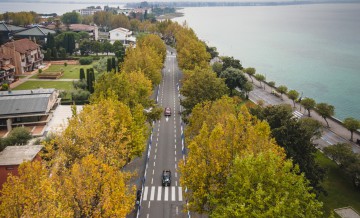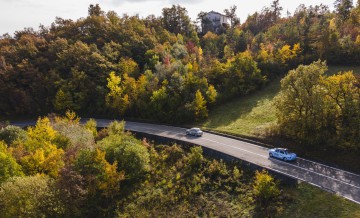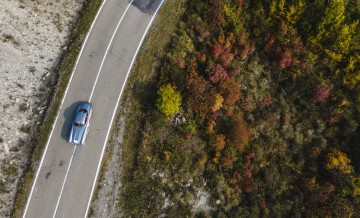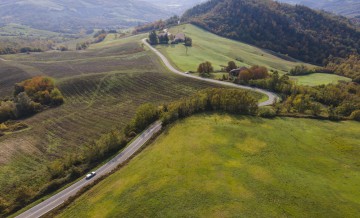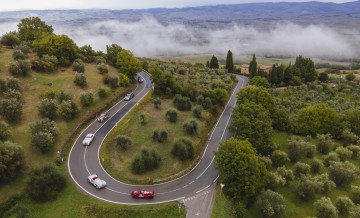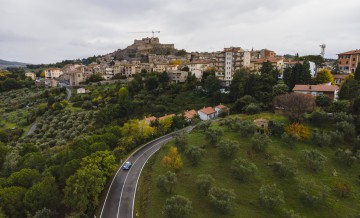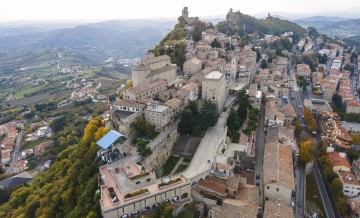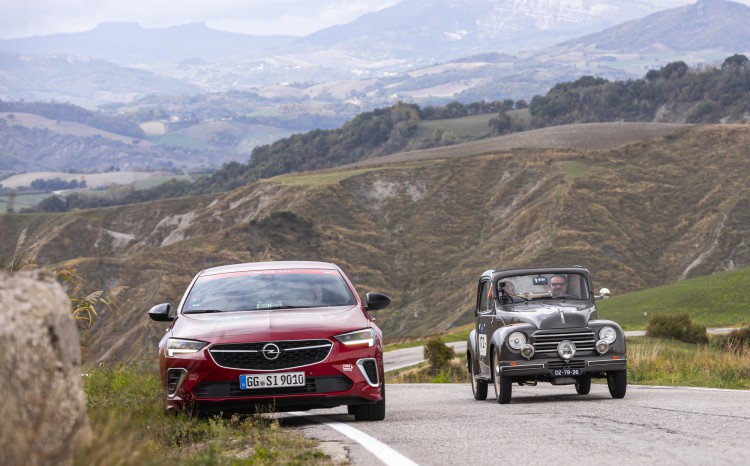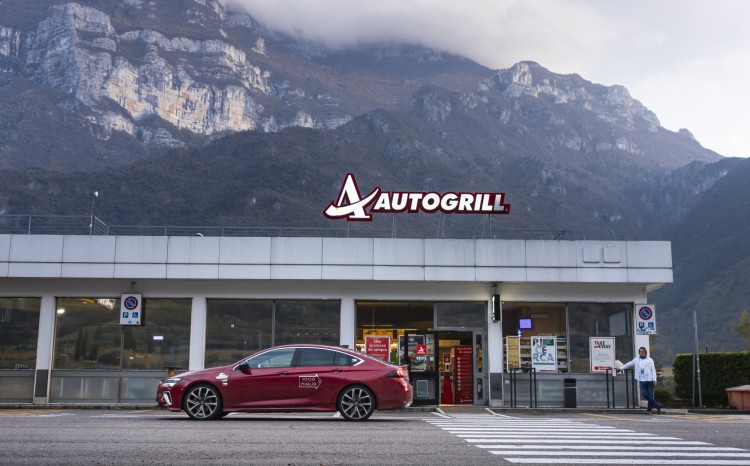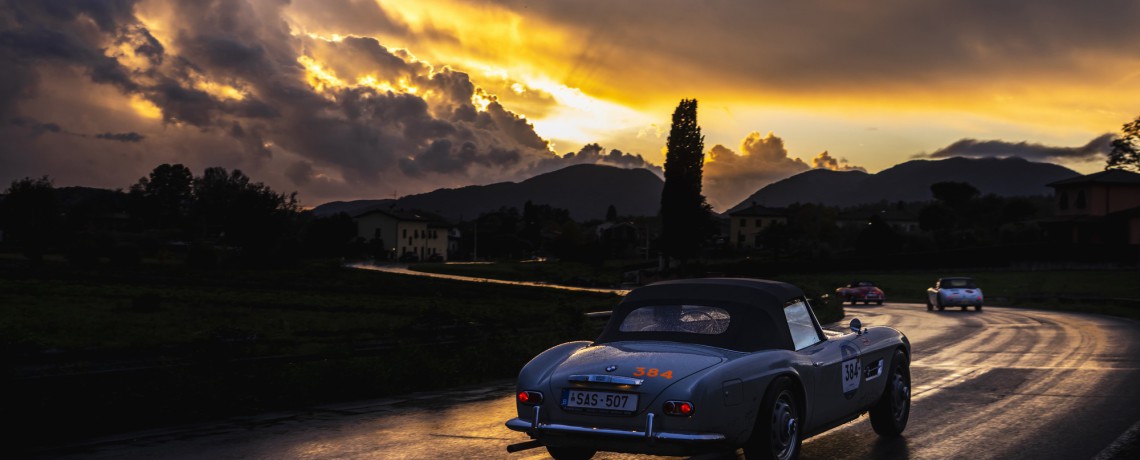
Text: František Vahala, Foto: Ondřej Kroutil
1000 Miglia 2020 is a cure for the soul
I had always looked up to the 1000 Miglia race as an idol. And every year in mid-May it was clear that I would take the photographer Ondra, some friends, and a fast car and head south across the Brener Pass to be part of the spectacular race follwoing red arrow. I took it for granted, but this year’s psycho has shown that it doesn’t always have to be this way…
He whose name (here) may not be spoken has changed this year’s plans for everyone. The classic-car season was poor, clipped, and actually kind of sad. A society si some sort of grey, without the little details that shape it (and that includes a drink with friends or a few warm words with the baker in the morning). People became alienated, lazier (confess, who wants to work?), apathetic, often depressed. We simply need each other – and many times as little as only a smile would do – in a time of actual zombie apocalypse, that’s more true than ever before.
I therefore consider it a small (big) miracle that the 1000 Miglia finally took place this year – it was moved from May to October, but that actually changed only the scenery in the end. For the first time, the world’s most beautiful automobiles performed their run in the company of autumn shades, fallen leaves, and that unique atmosphere of a soothing season that a sensitive soul can enjoy.
LITTLE DIFFERENT
Sure, because of the current situation, the competition was a little bit regulated and everything was done in full compliance with the restrictions in place. It started with a streamed press conference and continued at the event itself. There was a certain tension in Brescia on the day of the start – the number of viewers on Vialle Venezia was much smaller than in the previous years, people kept their distance (there were policemen walking on the streets and giving warnings, in polite way, about the distance or the need for a face-mask) and restaurants were half-empty. But that didn’t stop us from eating properly after a hard night’s haul across the highway. What was a bit sad was that there wasn’t even flyby of the Frecce Trikolori fighters that captivated me last year. Still, everything was running smoothly – cops on motorcycles were ready for takeoff, city streets closed, racers lined up for the takeoff.
But there were other things going on in the background of all this that are worth noting. For example, out of the original 410 crews, roughly 50 less eventually took off – for reasons that could not have been expected. Some simply canceled at the last minute due to fear of forced isolation, which they couldn’t afford because of their business (situation changed every day according to each country´s „semaphore“. A few crews had only gone through the start in Brescia and were fast moving home after that.
But the official guide, which we received along with the stickers for the car before the start, spoke mostly of hope. The 1000 Miglia is a symbol for all of Italy – not only of the elegance of classic cars, the skill of their designers and engineers, or the successes achieved on race tracks, but also of the Italian lifestyle. Last but not least, of course, it is also a big business. It is not only catering for more than a thousand people, but also accommodation, tourism, connected services and the presentation of firms from the backgrounds of renovation and maintenance of historic vehicles, which are closely linked to the race. For Italy, the 1000 Miglia is simply a matter of national honour, and the mere fact that, despite the unfavourable conditions, it has finally come to reality is a great reminder that Italy wants to get together and get back on its feet (and spin the wheels of industry and commerce).
LETS GO
So once again we were able to enjoy that colorful and beautiful starting grid, which showcases the best the car industry gave the world from the second half of the 20s to the second half of the 50s. And on the move! Even on the traditional walk through Brescia, whose streets are scented with a mixture of gasoline and oil, I am slowly settling into a melancholy mood, having to keep reminding myself that this is really happening. That I’m really in Italy, finally. I usually close the season in October, and even my own rallies that we create under the banner of Classicrallye.cz during the season are all behind us by now. We could only make one of six this year, so you can understand how much I miss the presence of roaring engines.
Before I can move myself, the 2pm has struck and the race is on. We immediately weave through traffic and fly toward Sirmione, one of the first passage points. Finally I have a moment of peace, with coffee and a cigarette as I sit on a stone pier and watch the cars passing by. The mood changes, as if the ice has broken. Local hoteliers had used the 1000 Miglii to give some reminder of the normal world and set up tables around the road, attracting locals and few tourists who were here for a late lunch. Noblesa began to emerge from the oppressive mood in Brescia, and I even heard the enthusiastic applause and whistles into the incredibly loud chatter of the beautiful presenter in the raincoat.
Finally on the move. The clouds of smoke gradually dissipate, and we admire the beauty we took for granted, even if it simply isn’t.
The list of eligible cars is very long, but don’t count on the Jaguar XK taking you to the first good one. Priority is given to rare pieces.
WHAT can you SEE
At the heart of the entire starting field are pre-war sports/racing machines of renowned brands, with the Brescia-made cars, known as O.M., traditionally leading the way (there were 8 pieces at the start, especially the stunning 665 S and SS MM types). Once again a parade of splendor and, above all, respect for the roots of racing, which I always appreciate!
The massive turnout is regularly shown by Alfa Romeo cars, mentioning 15 pieces of the 6C model in various designs, ranging from the 1750 SS Zagato racing types of the early 1930s to under 6C 2500 Super Sport Competizione of 1947. The icing on the cake was the eight-cylinder Alfa Romeo 8C 2300 Spider and the absolute highlight brutal Alfa Romeo 8C 2900 A Botticella, one of the priciest (and loudest) cars at the grid. There were also all sorts of Fiats, the 508 or 1100 types being popular, often with exclusive bodywork, but this year we mainly noticed Fiat 514 types in various designs including the 514 Coppa delle Alpi. One of the highlights for the Italian tech lover was the participation of the Fiat 501 in the stronger S version. Just to remind you, the 501 was the first model that Fiat produced after World War I. Between 1919 and 1926, different versions were produced – the sports S and SS has 1,5 litres four-cylinder, making 27 and 30 horsepower respectively.
LA DONNA PIÙ BELLA
In addition to the Fiats, the Lancias have been very visible this year, especially the various versions of the Lambda model, which is famous mainly for the use of unibody construction. I love these wheelbarrows, but this year I was captivated by another car, an absolute blast and a perfect expression of the sheer elegance of the 1930s: a 1938 Lancia Astura Sports Coupé, with carrozzeria from Frenchman Marcel Pourtout. Astura is generally seen little, and when it is, it will playfully draw all the attention. This was the brand’s flagship model, replacing the famous Lambda and Bilambda models in 1931. The Astura was initially equipped with an unusually narrow 2604 cm³ V8 engine, with a power output of 73 horsepower (the maximum speed was 125 km/h). Later she had a three-litre, just like the one in the pictures around. I’ve only seen Astura a few times in my life, and it always made my knees shake from the way it affected me. It is captivating, presenting a hard-to-beat blend of performance, comfort, style, elegance and a reminder of the brand that was best showcased at the traditional competitions of elegance. God, perhaps I’ll just add #savelancia or at least #dontforget! Please…
It were the Asturas from third and fourth series of the second half of the 1930s that were fitted with the most beautiful bodywork of its time – in addition to the aforementioned Pourtout, consider Italian companies such as Bertone, Boneschi, Castagna, Pininfarina, Touring or Viotti. Astura was taken up by others, from the British mentions Abbey Coachworks, Carlton Carriage London, Gurney Nutting, March or James Young, from Germany then Otto Rasch, and there was even an Astura with a bodywork by the well-known Czech coachbuilder Sodomka (!).
CARROZZERIA! And GIANCARLO…
The famous Italian coachbuilders, or their products, are an integral part of the 1000 Miglia. Their creations are adorned with a variety of different cars presented, but there are also factory pieces that surely match their elegance and exceptionalism. We mean, for example, a whole variety of Bugattis, Bentleys, Aston Martins, Healeys, Talbots or the incredibly cool Delahayes that looked irresistibly sexy. This year we were lucky enough to enjoy two of them, both representing the highly successful racing type 135 known as the “coupe des alpes”. (I immediately think of the best advertisement for a good drink in the form of Gentlemen’s Wager II, with Jude Law driving her from Italy to Monaco, supervised by Giancarlo Giannini…).
Both sport versions of the CS, in typically blue colour, wer powered the 6-cylinder OHV with power output of around 100 horsepower, enough to reach speeds of up to 150 km/h. The impressive racing machines were reminiscent of their glory days – by the end of the 1930s, Delahaye had won at LeMans, in Monte-Carlo, but had also achieved their feats at other major European events. Needless to say, seeing them in action is a once-in-a-lifetime experience. Instant love, and even if you were half ignorant, you had to love them.
You can’t leave out other brands without which it wouldn’t be complete. Apart from the various Mercedeses, Porsches, BMWs, Triumphs, Austins or MG, it is mainly Italian “garage” brands that we enjoy a lot. This year we were able to admire an unexpectedly colourful pack: Cisitalia, Osca, Siata, Ermini and others… If the subject appeals to you a little more, you’ve got something to do for the winter. There’s plenty to study.
OUR CAR
As in last year’s, this year we set out with a MM from Brescia, enjoying the passes through the centres of the historic towns. Our testcar in form of Opel Insignia GSi was particularly nice, I admire its superb suspension, which dealt playfully with Italian inequalities, but also sufficient comfort and performance. I really enjoyed it, for a buck, the last decent Opel, not mixed with the other stuff PSA sells to infidels.
GETTING BETTER
The farther south we went towards Rome, the more pleasant the mood became, the more relaxed the people, and perhaps the racers, too. The interesting thing was that the passage controls were contactless this year – the car simply slowed down in the plaza, was fastly introduced by the moderator and drove away. The meaning was to prevent marshals from contacting the crews. A continuous measurement of crew temperatures was also evident. Lunch (the only stop during the day except refueling) was also affected by the changes, as well as gala evening that lacked the elegant opulence of past years. So more people filled their social media networks, and all the more joyful was the transit of all the participants through the finish. After all, we’ve also managed to fill our (a)social accounts nicely during the event…
forza ferrari!
The race included the Ferrari Tribute for the 10th time this year, recalling the close association of the Freccia Rossa and Ferrari brands. More than 70 cars started early in the morning, with two of the Monza SP1 and SP2 or Ferrari F40 pieces standing out among them. What was new was Mille Miglia’s partnership with the Supercars Owners Circle club – a selected group of supersports cars could go (though tamed by the organiser’s Mercedes) with the race. We’ve been thinking about this in the Czech Republic as well, and in the end we haven’t allowed the participation of supercars in our rallies. But maybe it’s time to reconsider. Would you like to a have ride? Apart from various interesting creations by Lotus or McLaren, I’ll stick mainly to the Lamborghini Diablo VT, which one doesn’t meet that often and has already managed to become an attractive youngtimer, or the Italian Dallara cars.
During our trip through Italy, we have met Dallara mainly during a quick tour of headquarters in the municipality of Varano de´Melegari. As part of the competition, the company focusing from the early 1970s on building racing machines and, in recent years, servicing and engineering support for super sports models of various brands mainly presented its novelty in the form of Dallara Stradale. This extremely aerodynamic supersport benefits from years of experience in the production of carbonfibre parts and uses the 4-cylinder 2.3 EcoBoost known from the Ford Focus and tuned to 400 horsepower . At around 850 kg, Dallara is putting in some impressive performance.
TuScany
We did not reach Rome after all. We preferred to cut the trip short and on Friday night cut Italy across and stayed in the mountains of Tuscany. Our sanctuary became the town of Abbadia san Salvadore, and the local Cat and Fox restaurant (Il Gatto e la Volpe) saved us with amazing cuisine and strong wine before we finally lay down in one of the hotels. As usual, we waked up around seven to catch the Ferraris at Radicofani. And it started all over again – the indescribable driving situations, the speed, the joy of beautiful cars and places. Just pure Italy, pure 1000 Miglia, which we enjoyed until Sunday’s run-through at Brescia.
GRATITUDE AND MEMORIES
Spending four days in the company of more than 400 fascinating racing machines during and being part of the “red arrow” journey was a real cure for the our souls. Describing the atmosphere, or at least approaching the entire starting field more accurately, is a task he would have published on a book. Nor is it possible to convey all the experiences, the particulars, the small pleasures that one experiences while passing through Italy. But that’s why we have Ondra Kroutil and his great photographs, right? The video also awaits you, currently produced in collaboration with an individual called Je Tma Jetam. Is the MM really the world’s most beautiful race? No doubt, and in this crazy time, perhaps even more than ever before.
